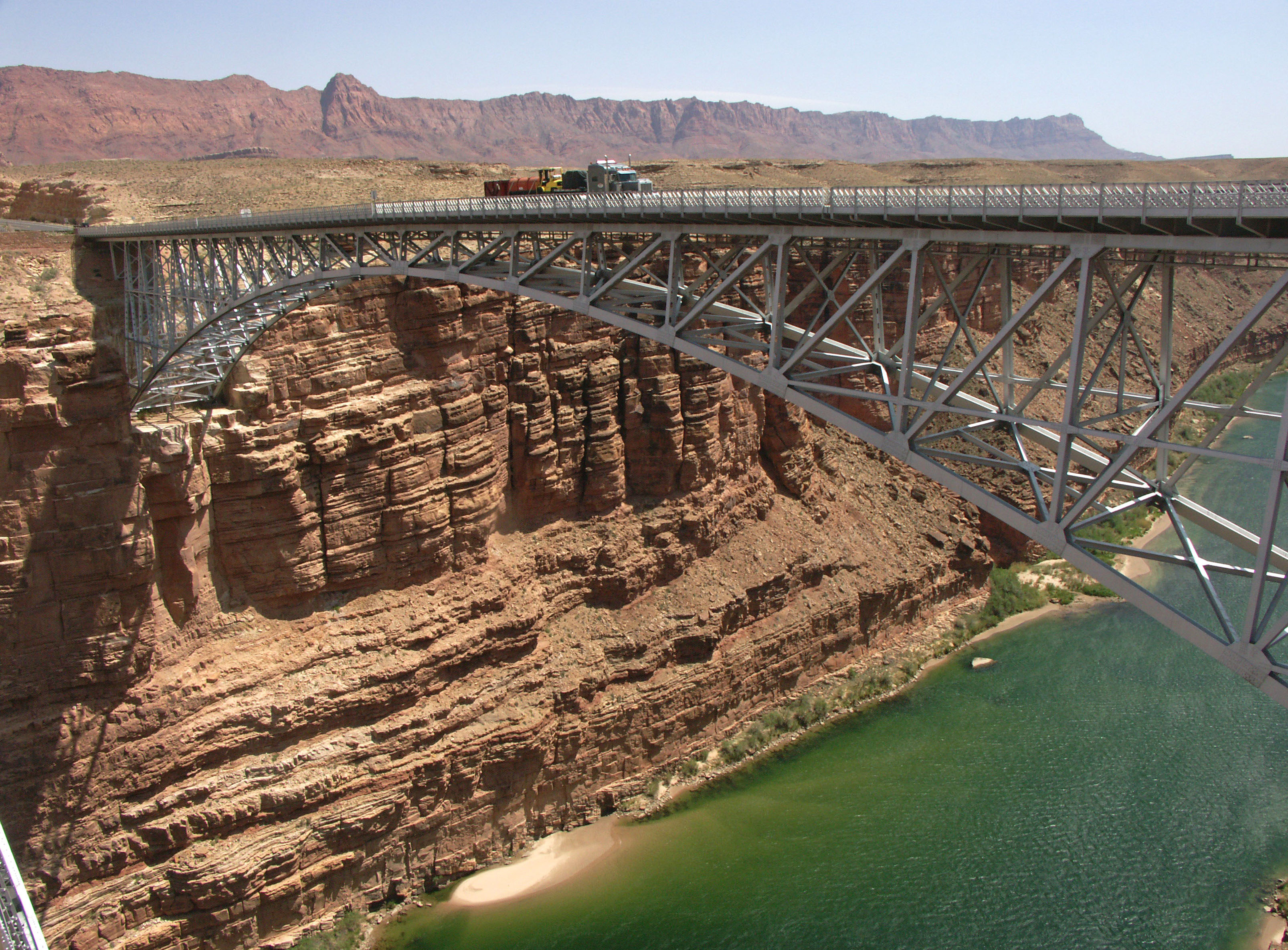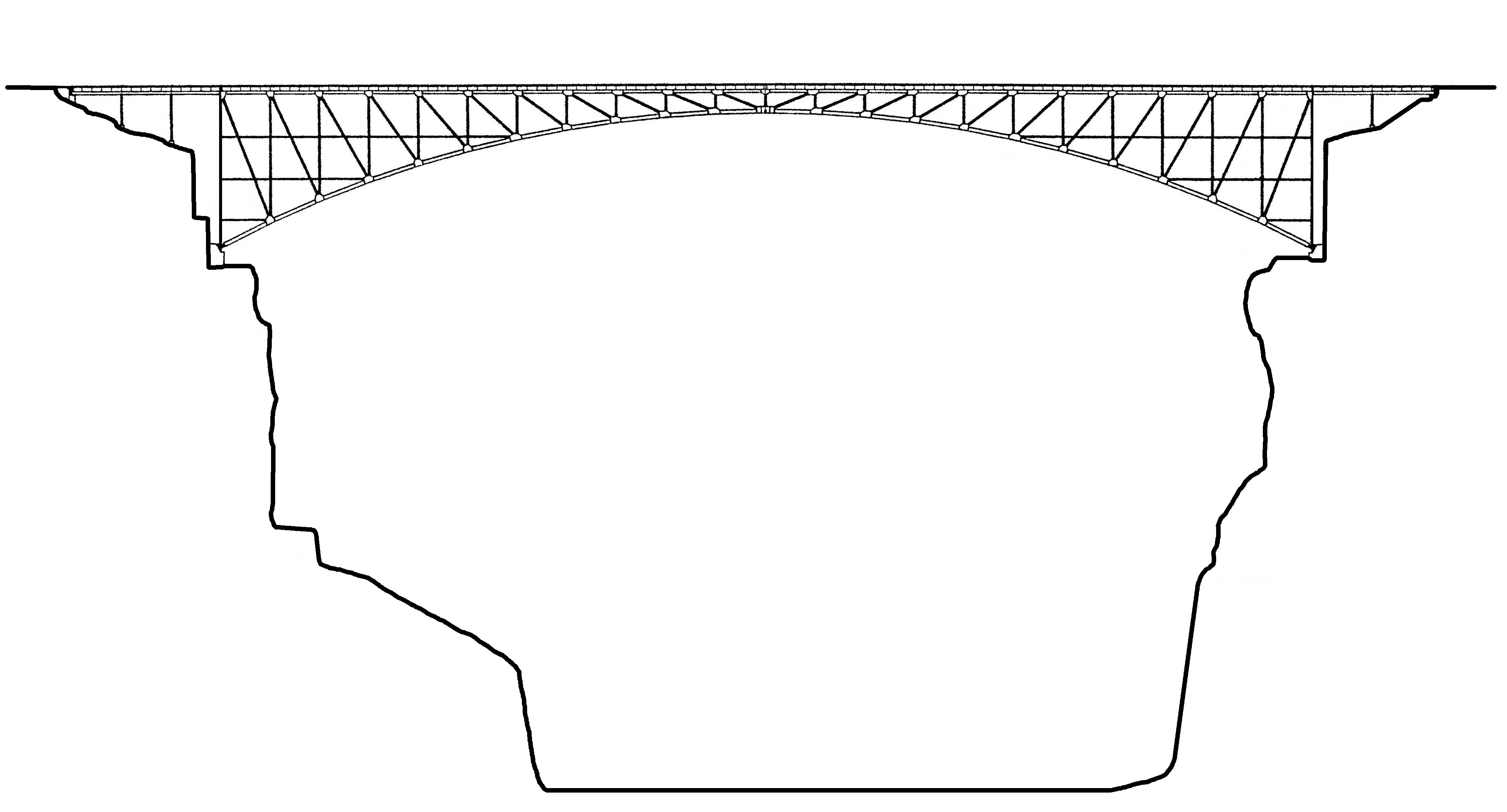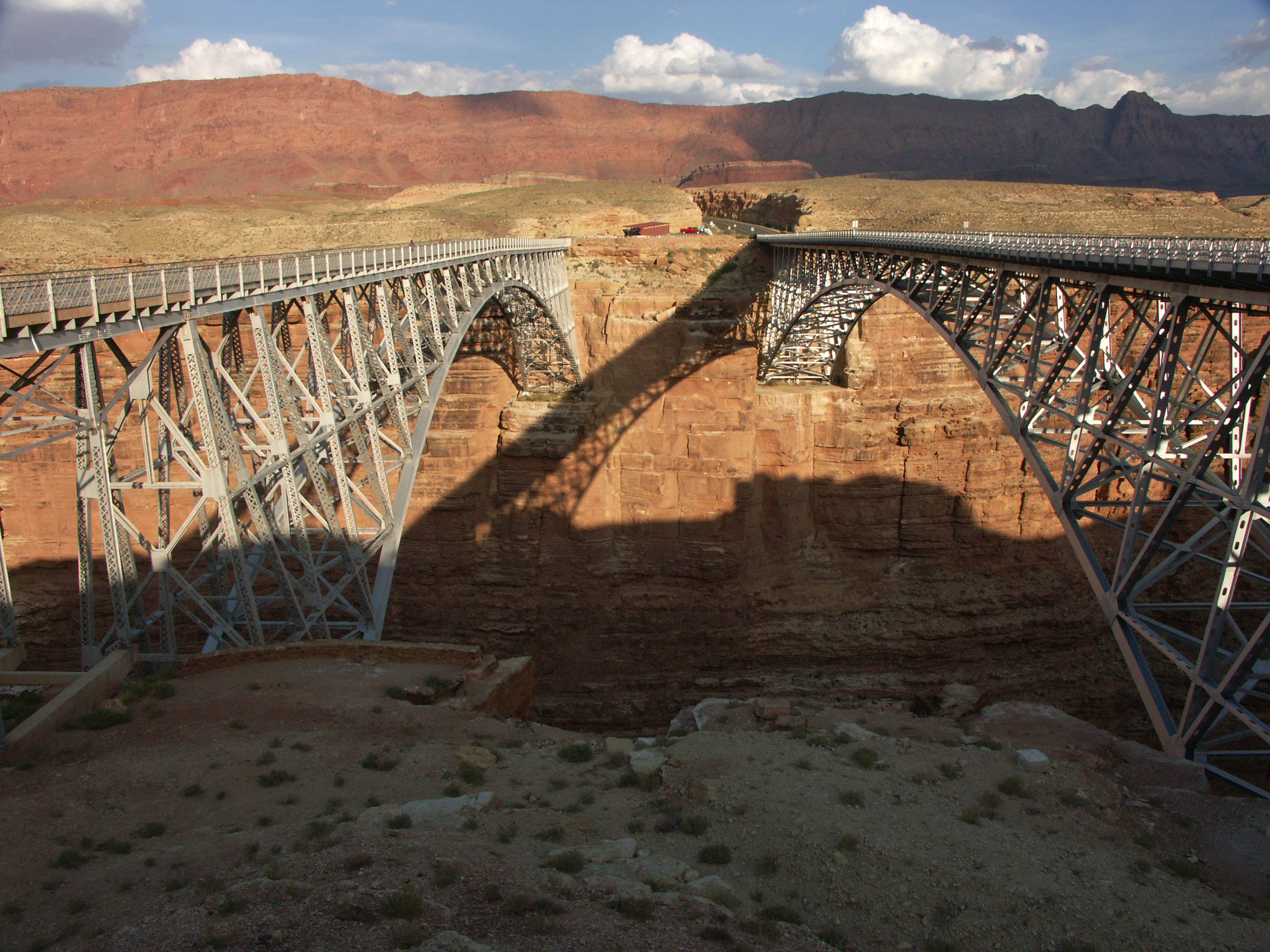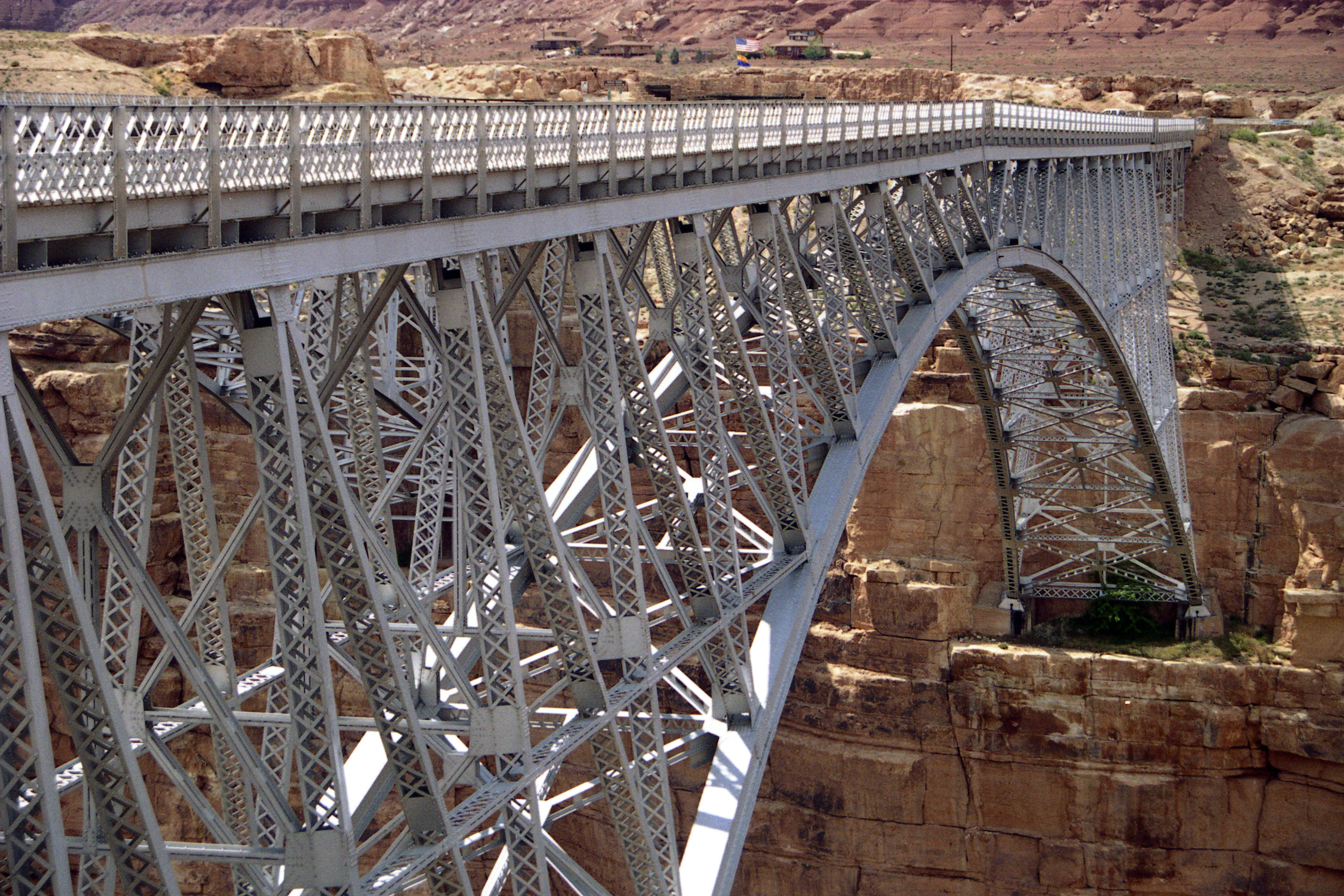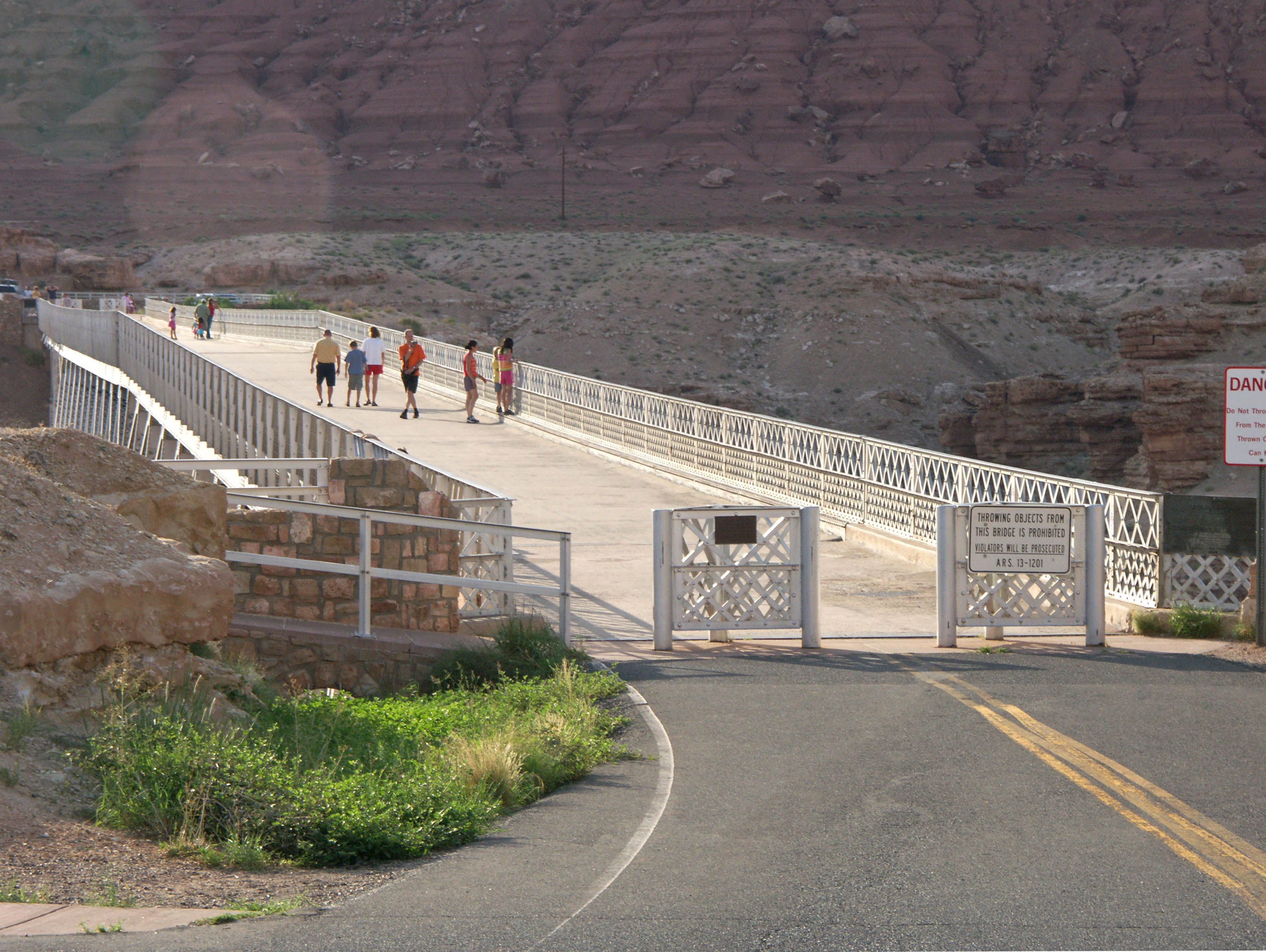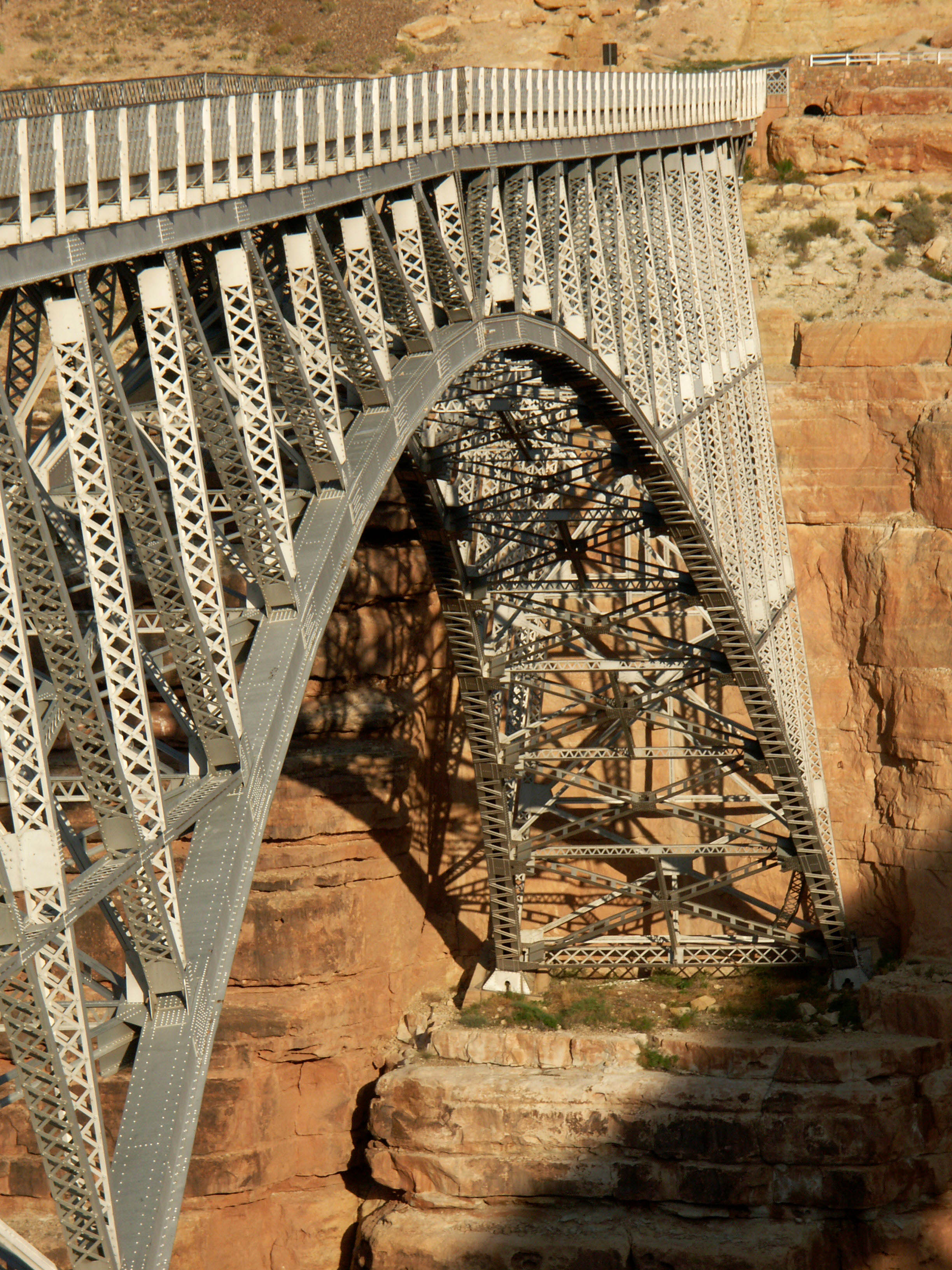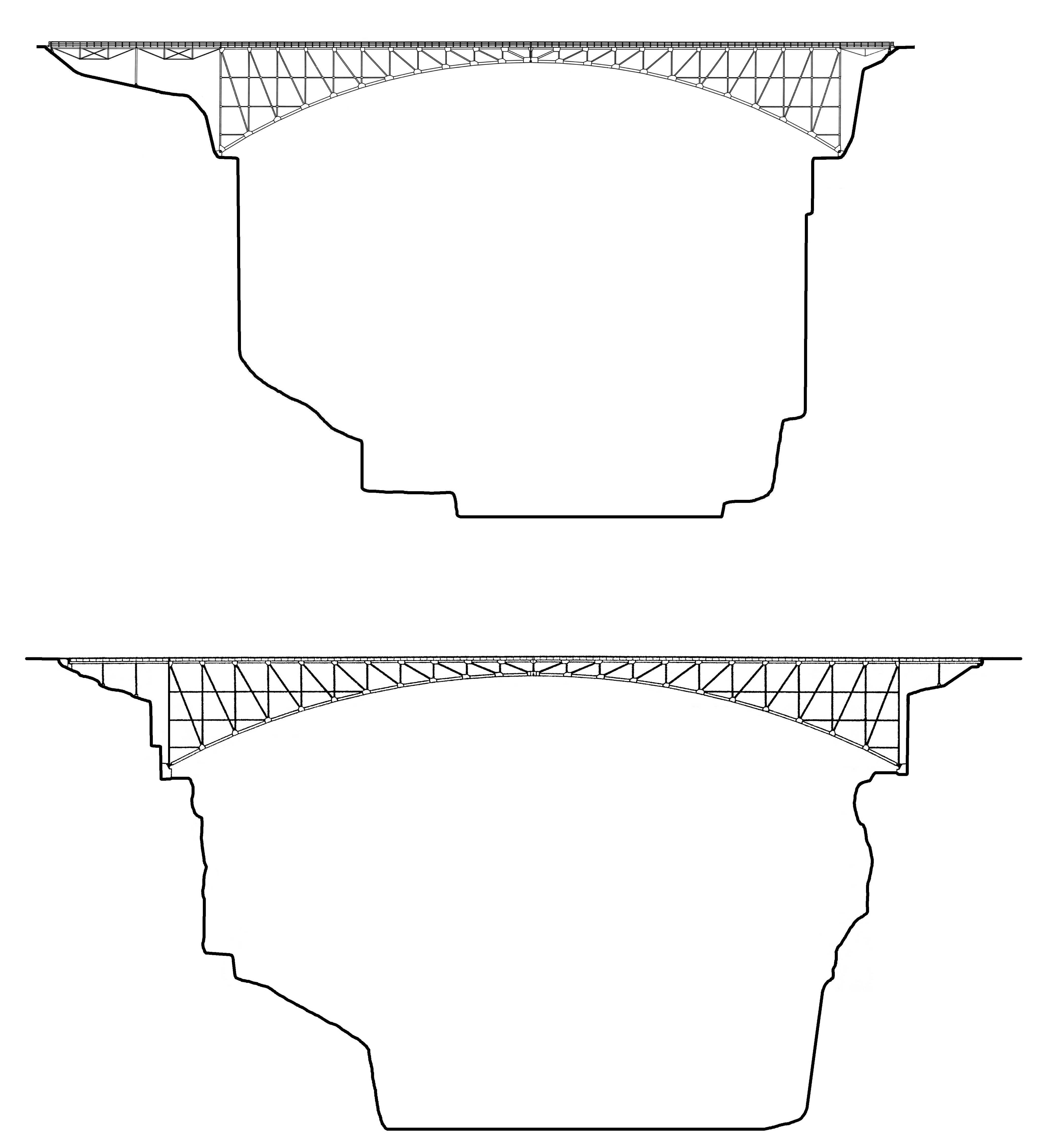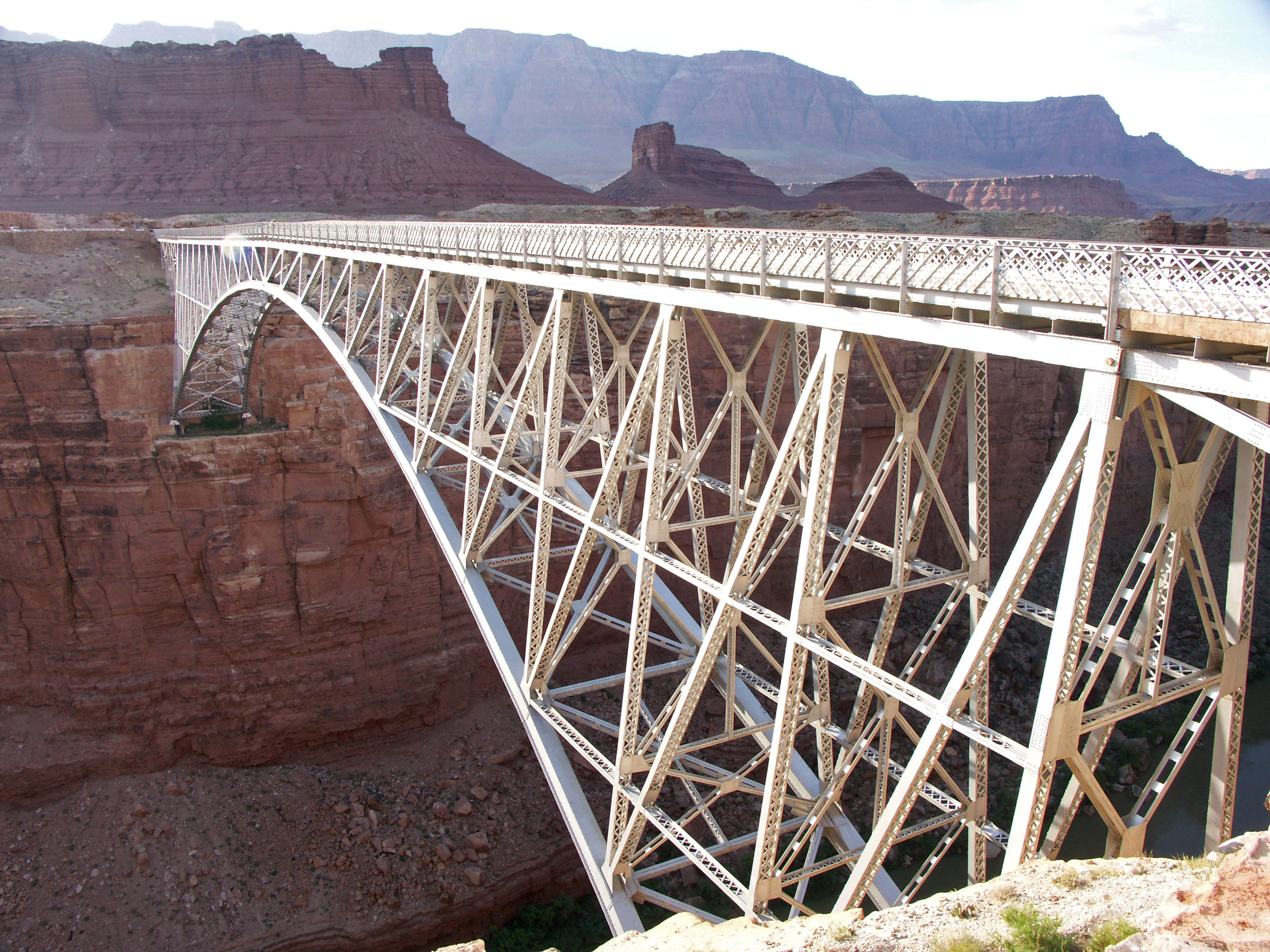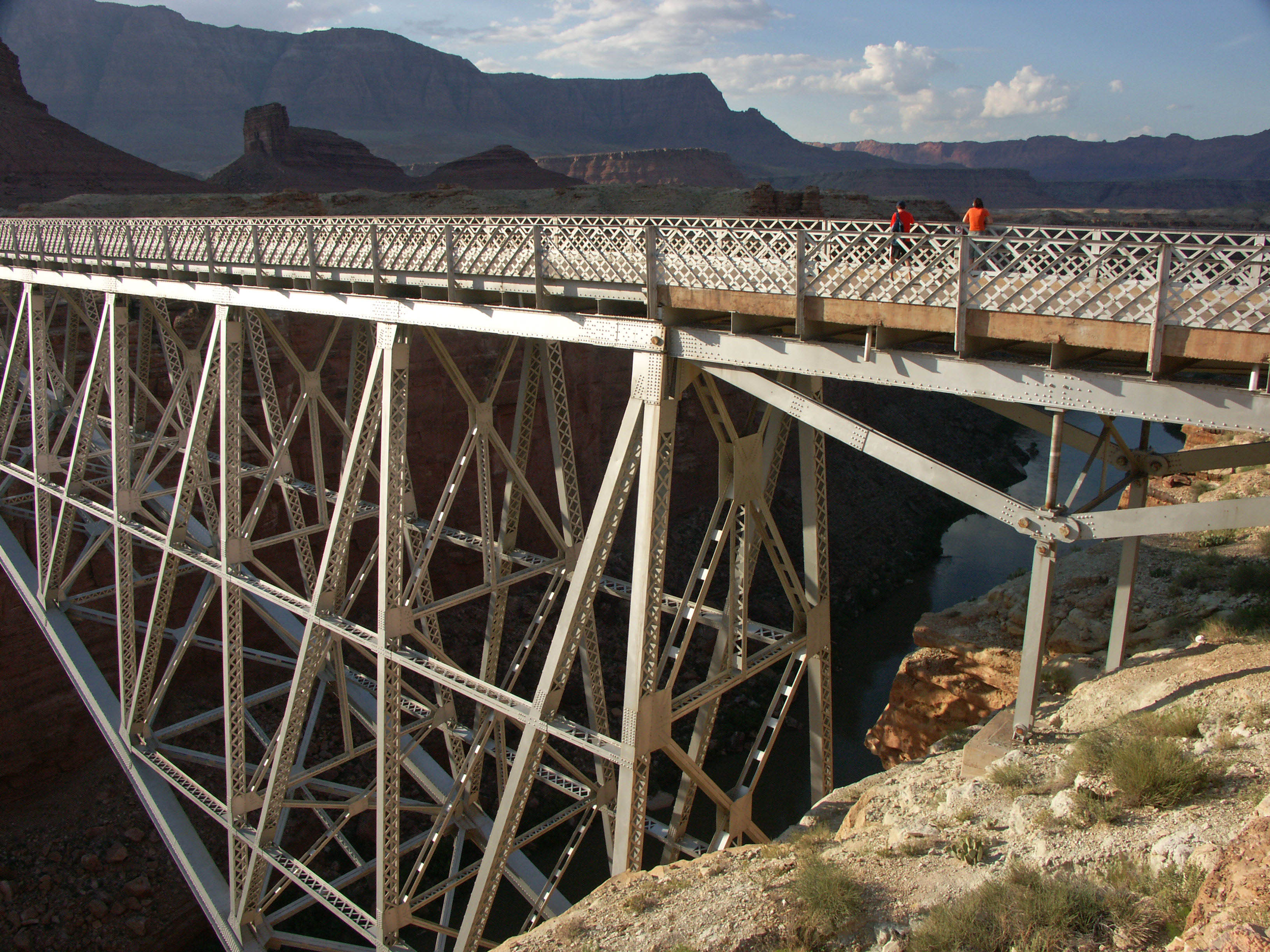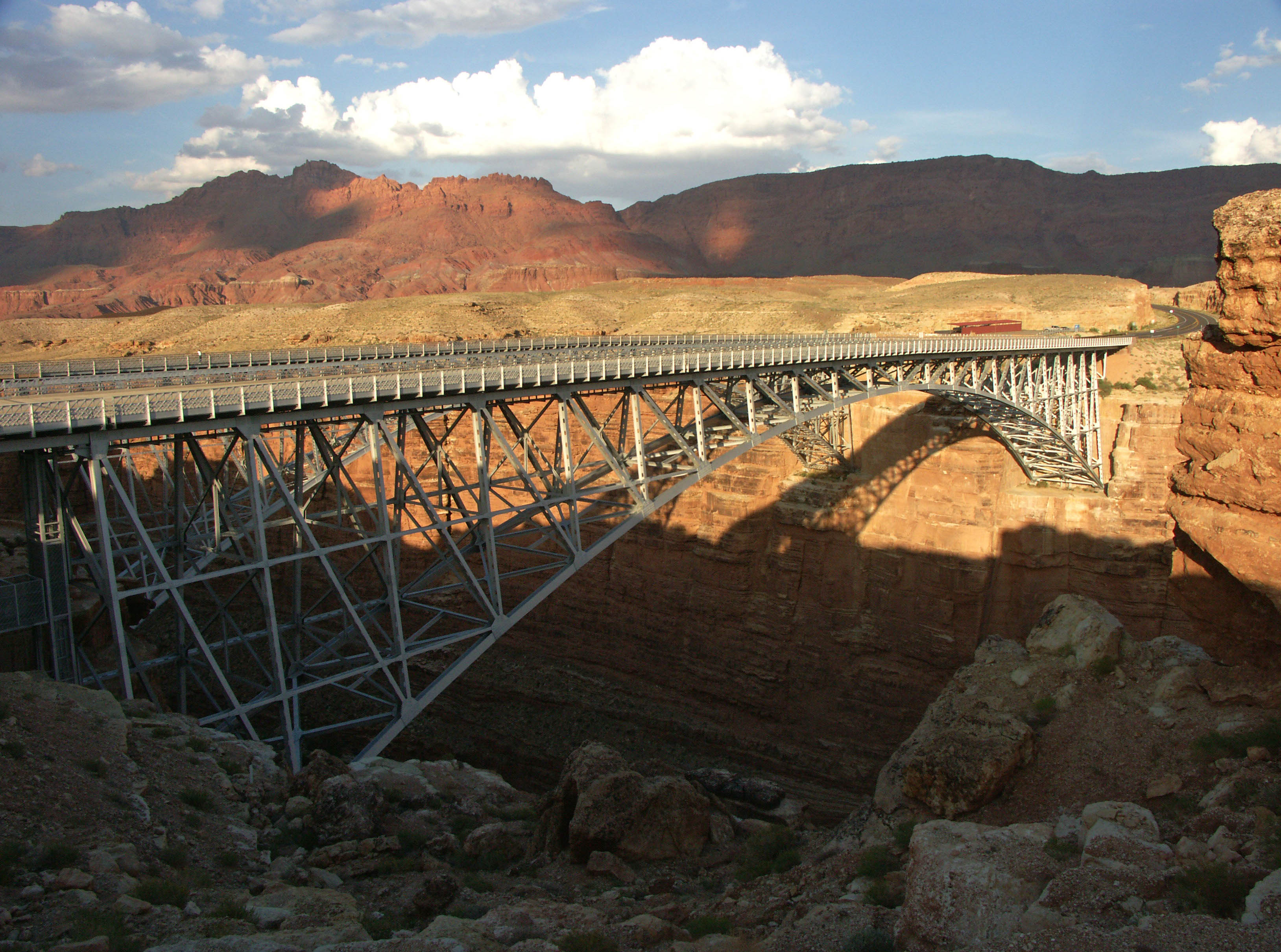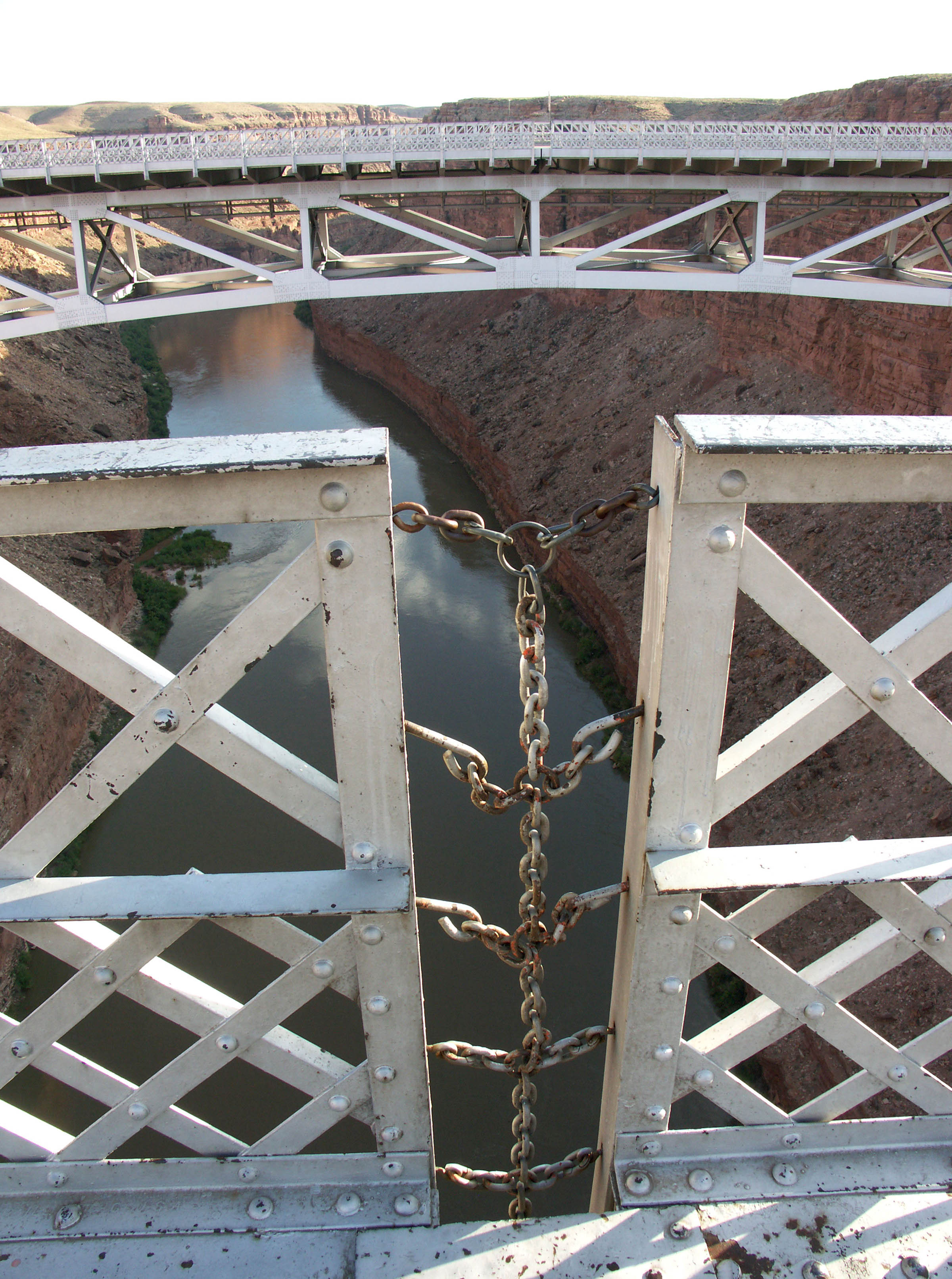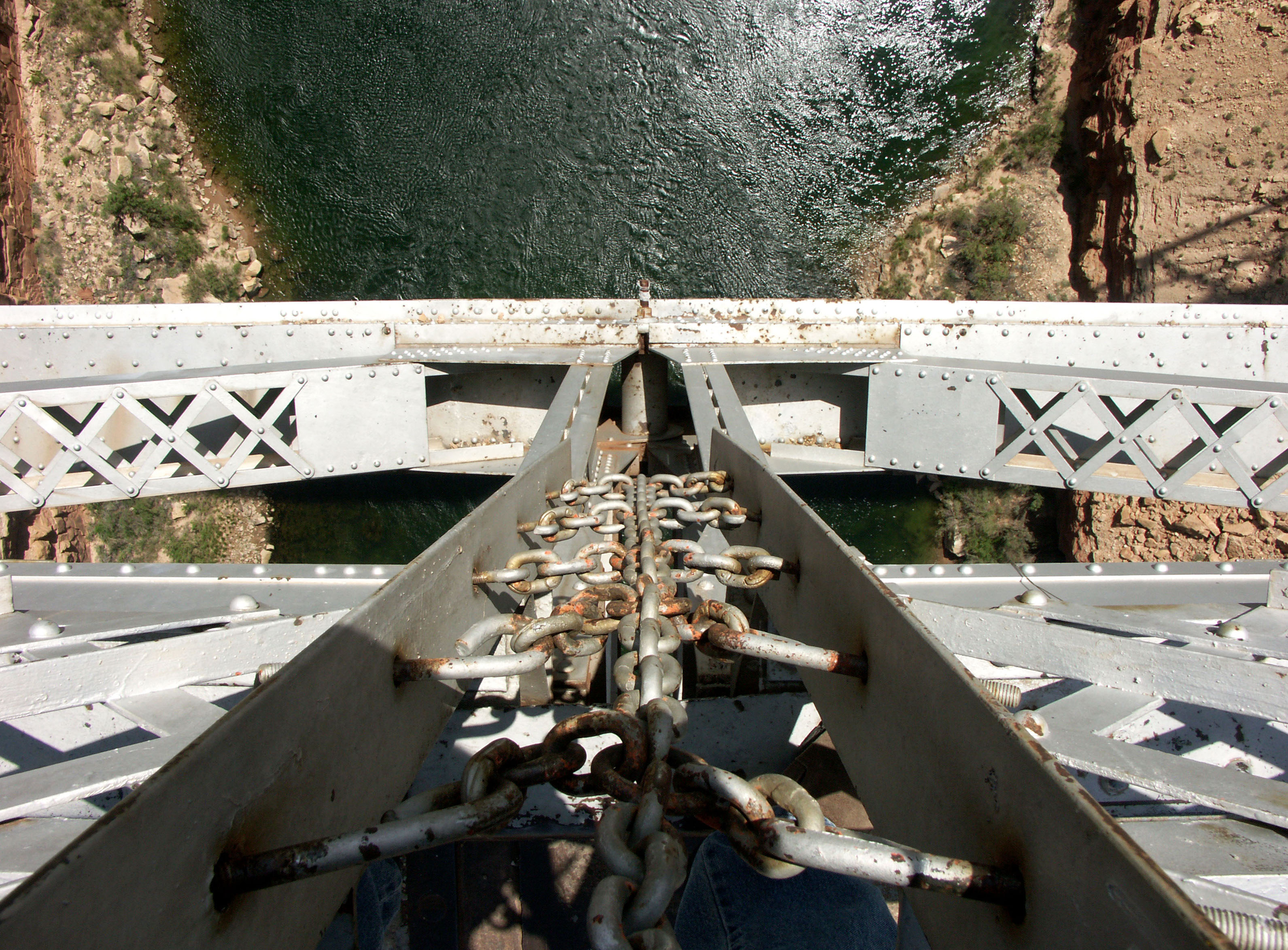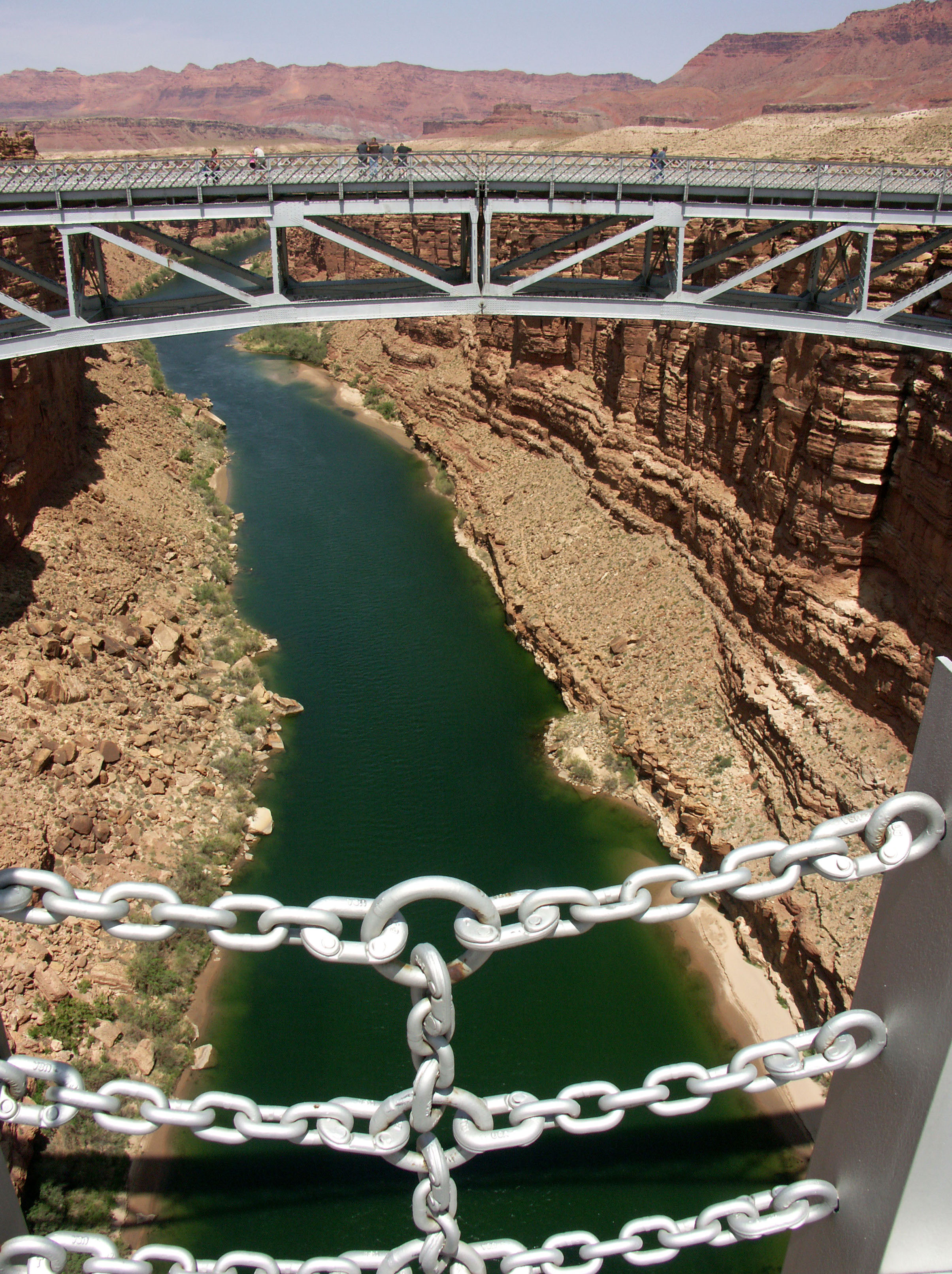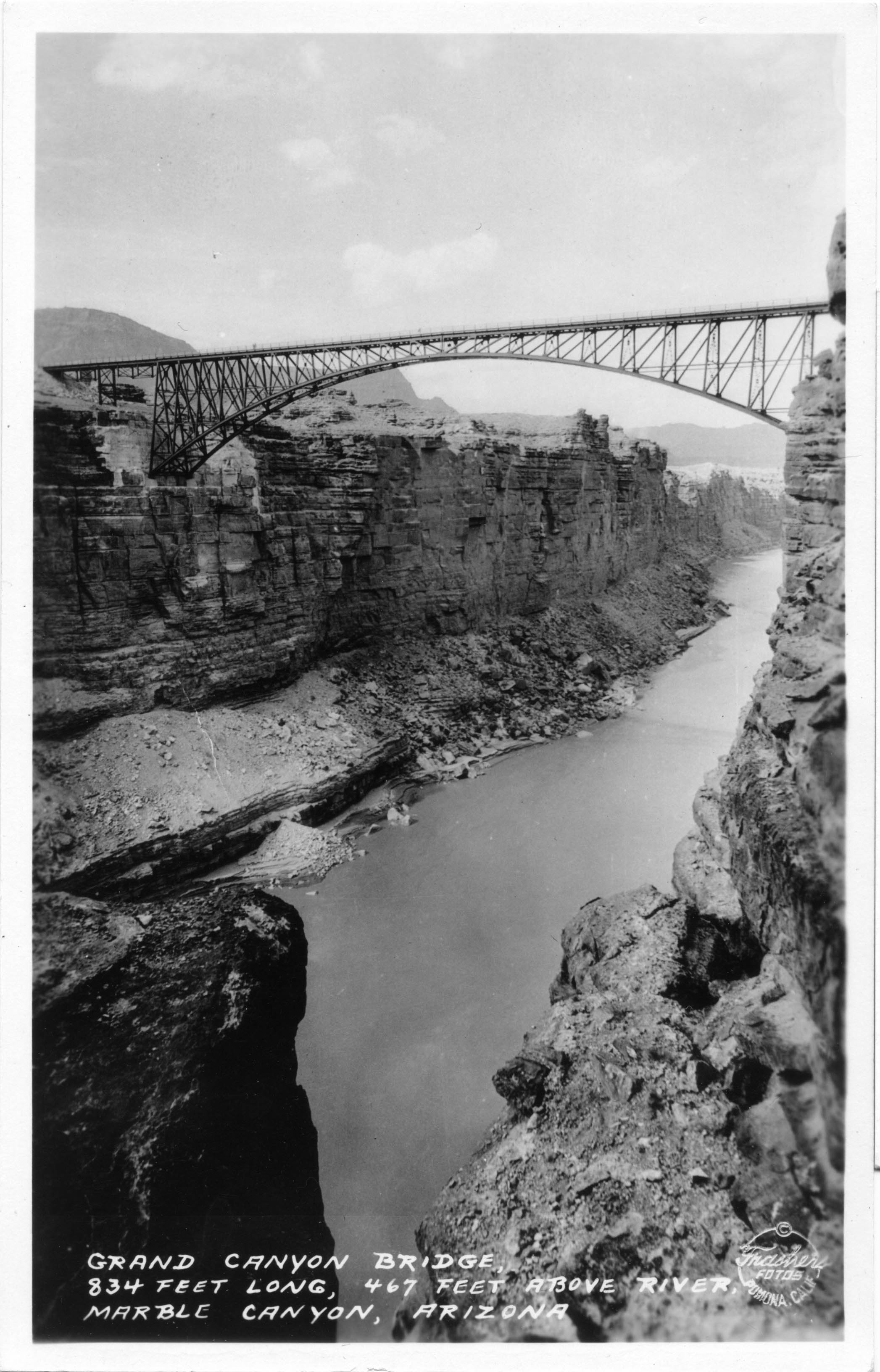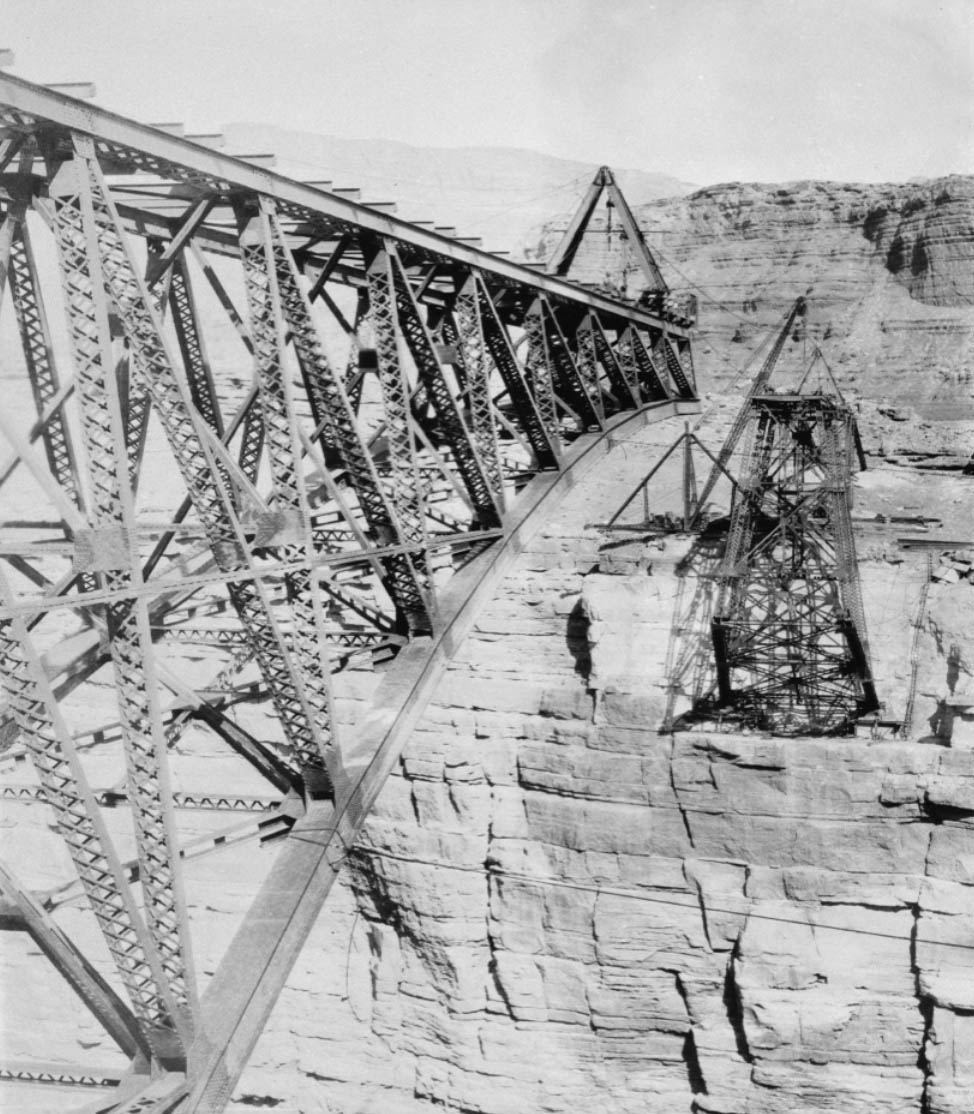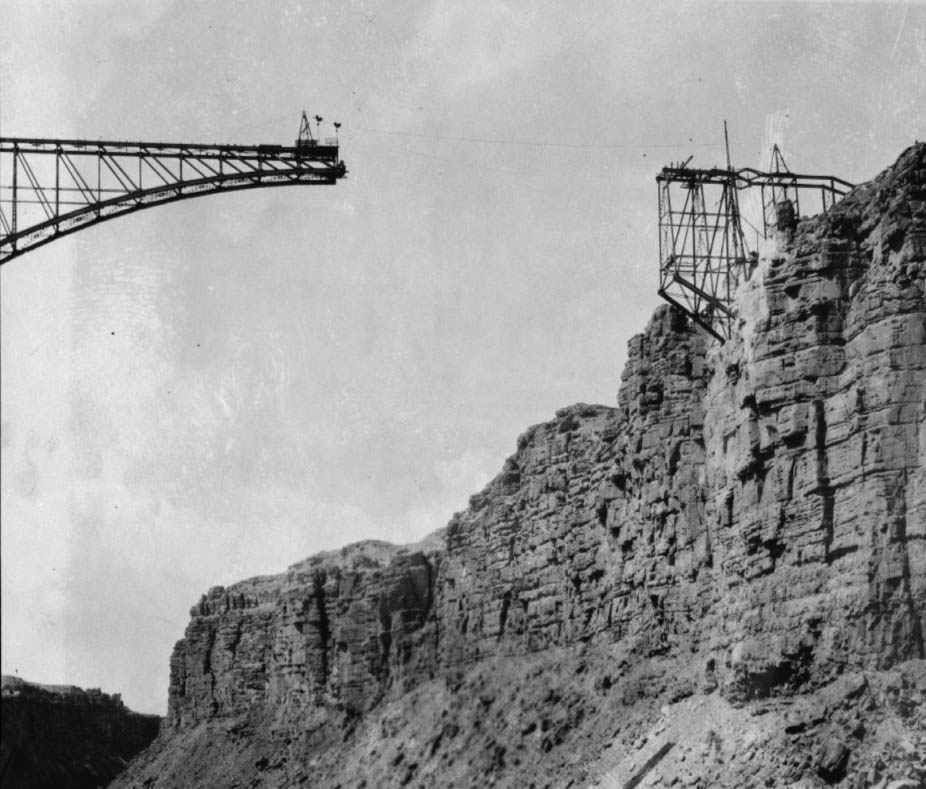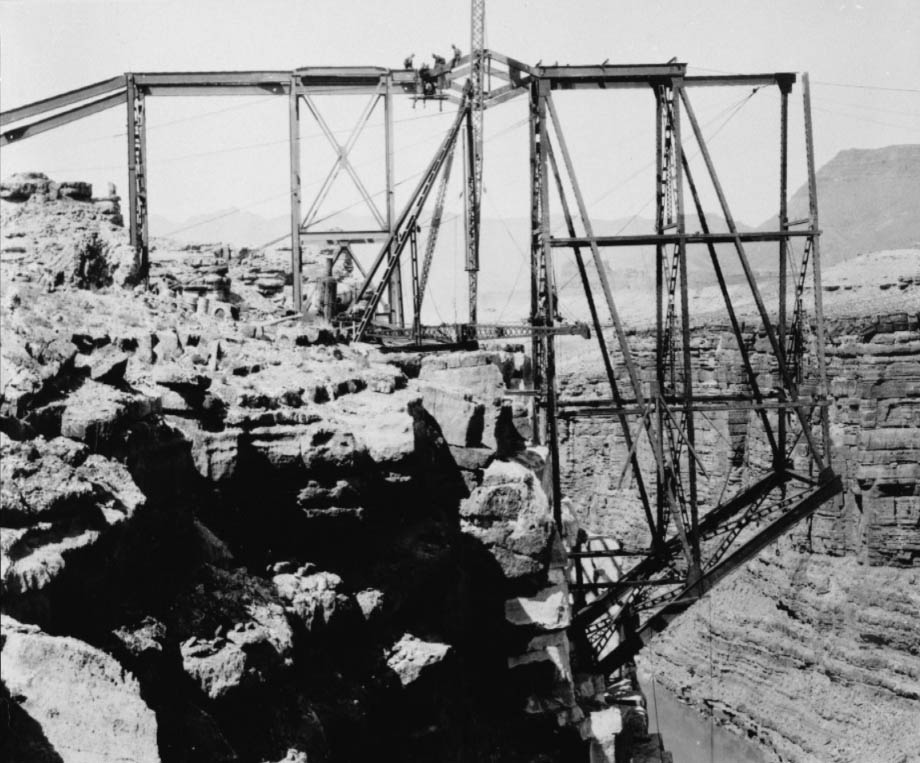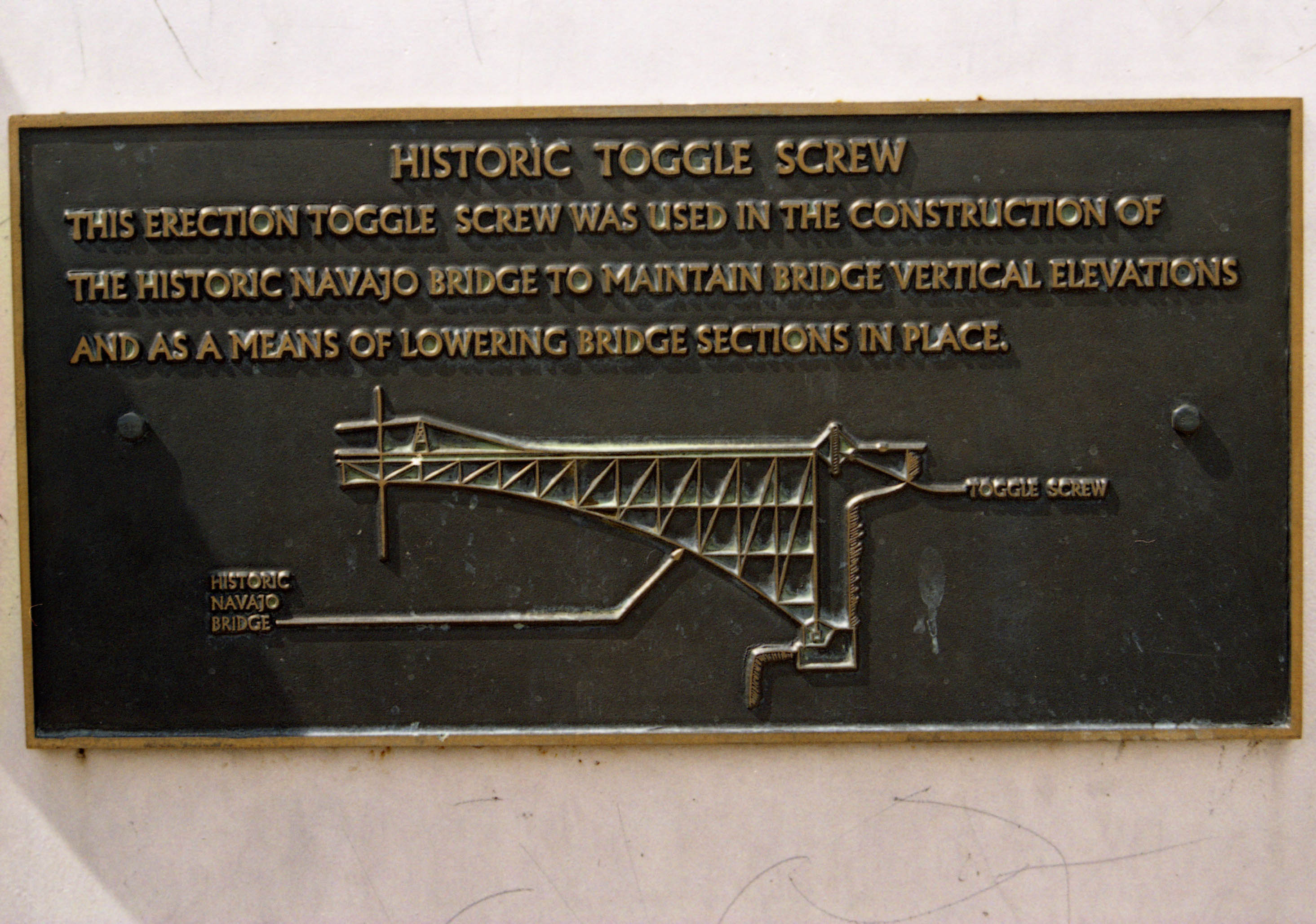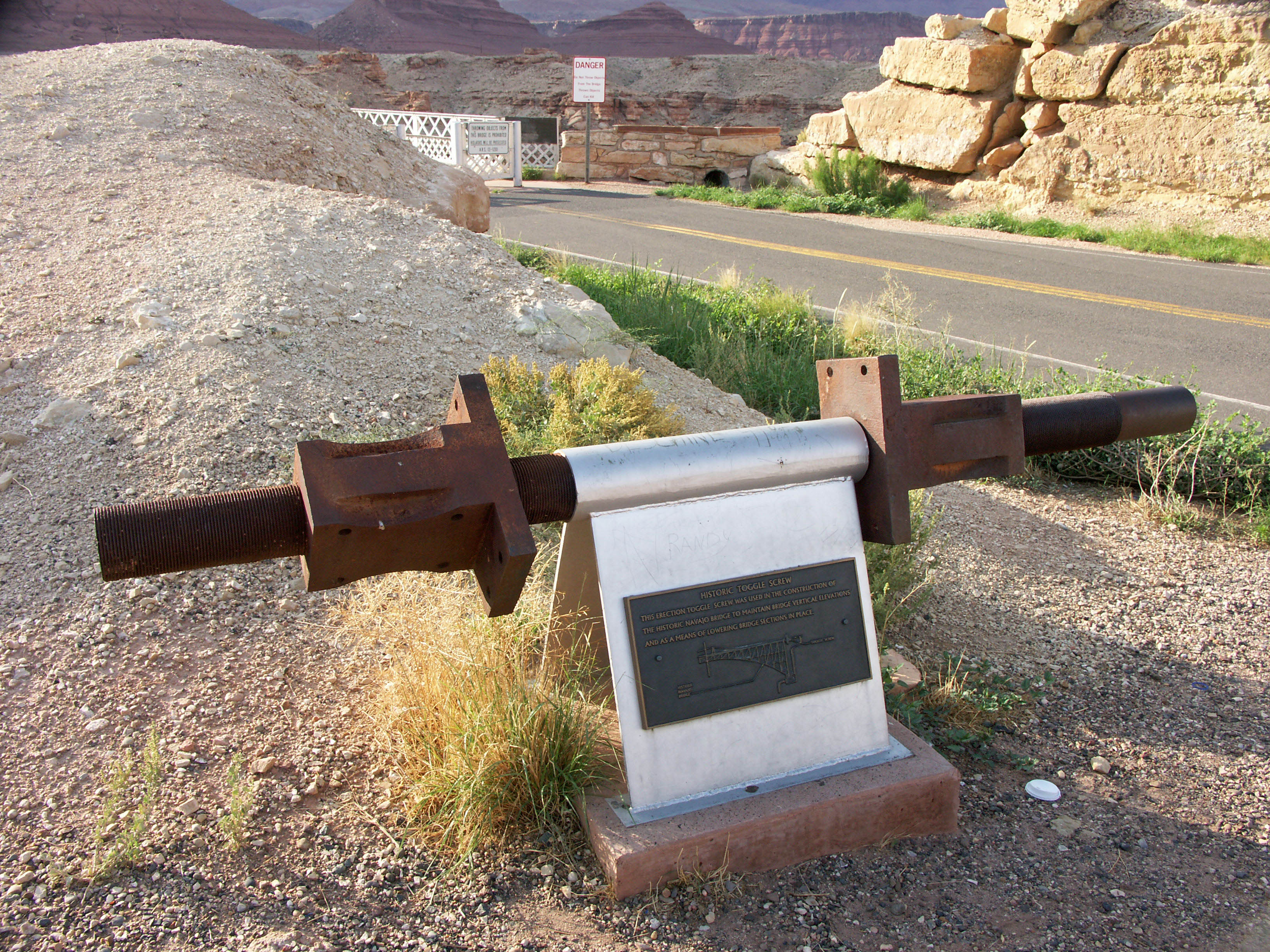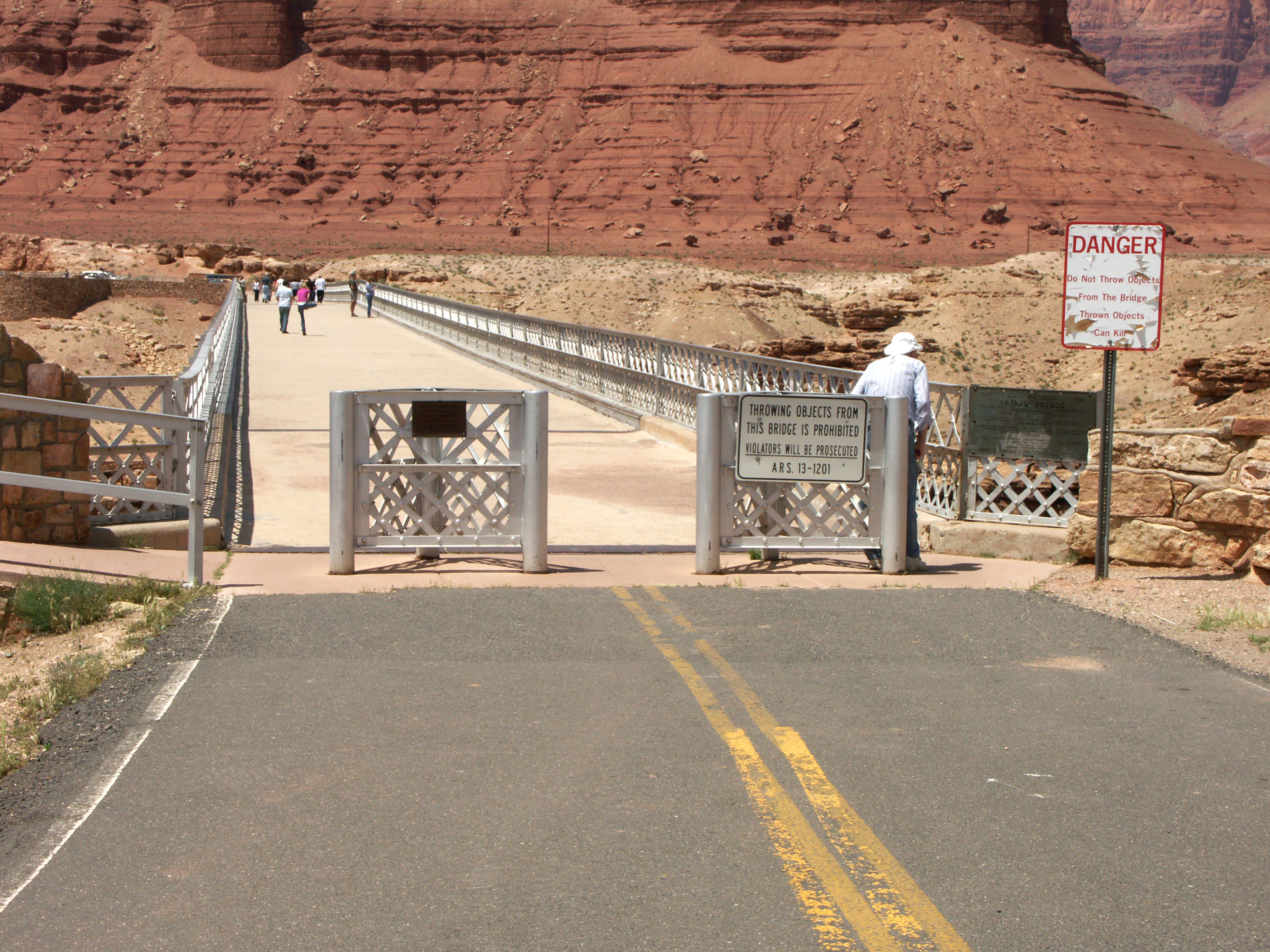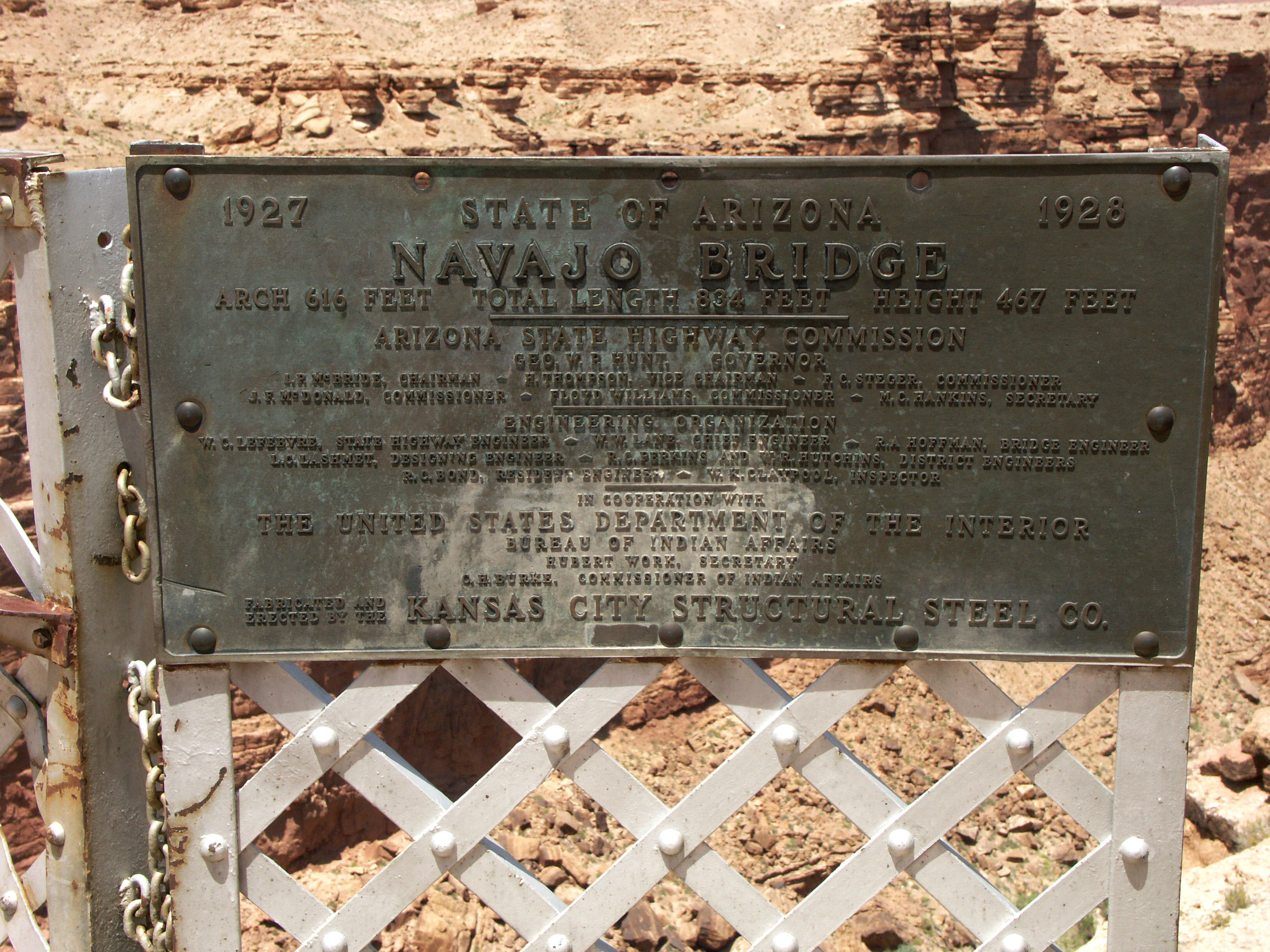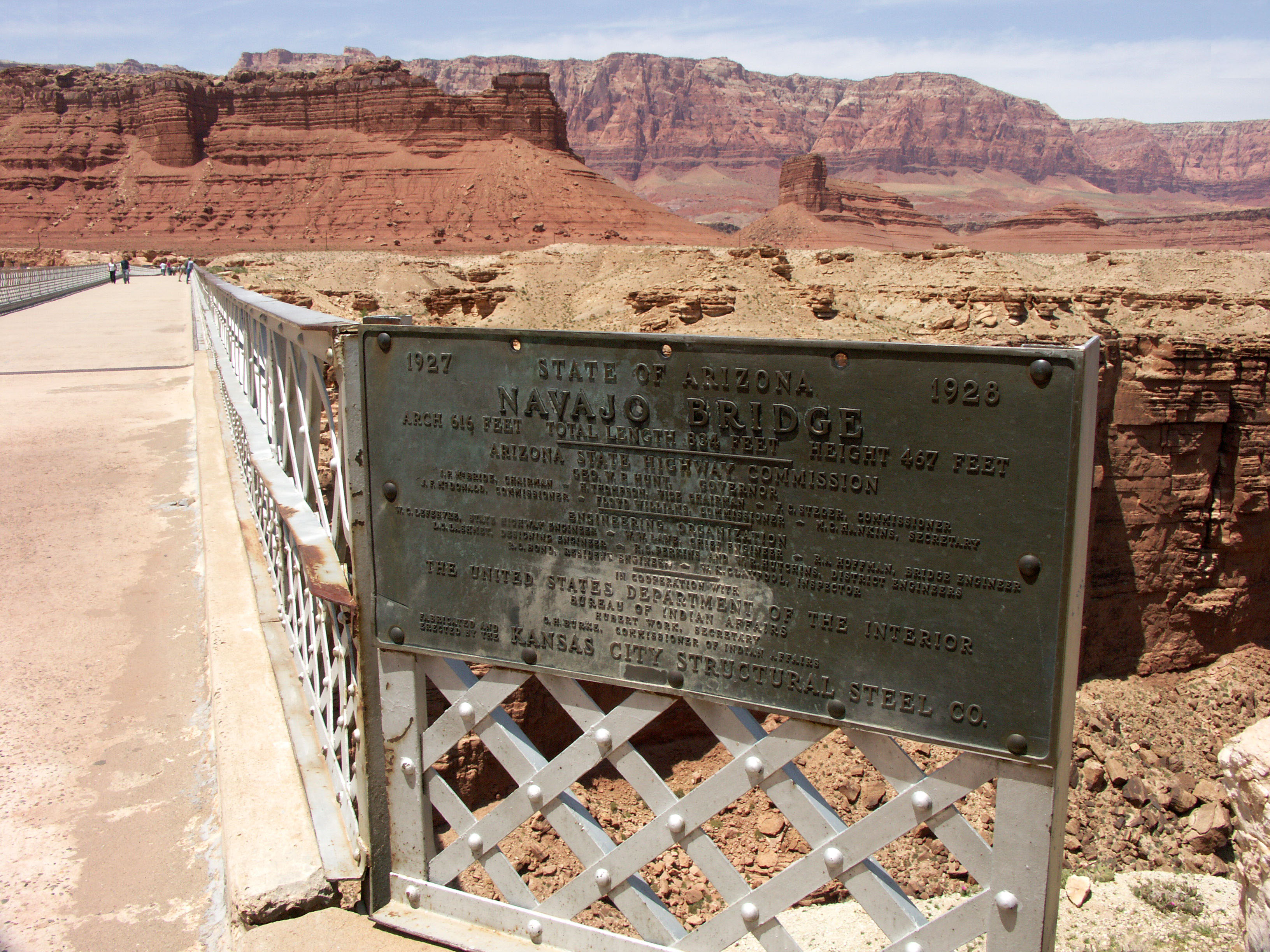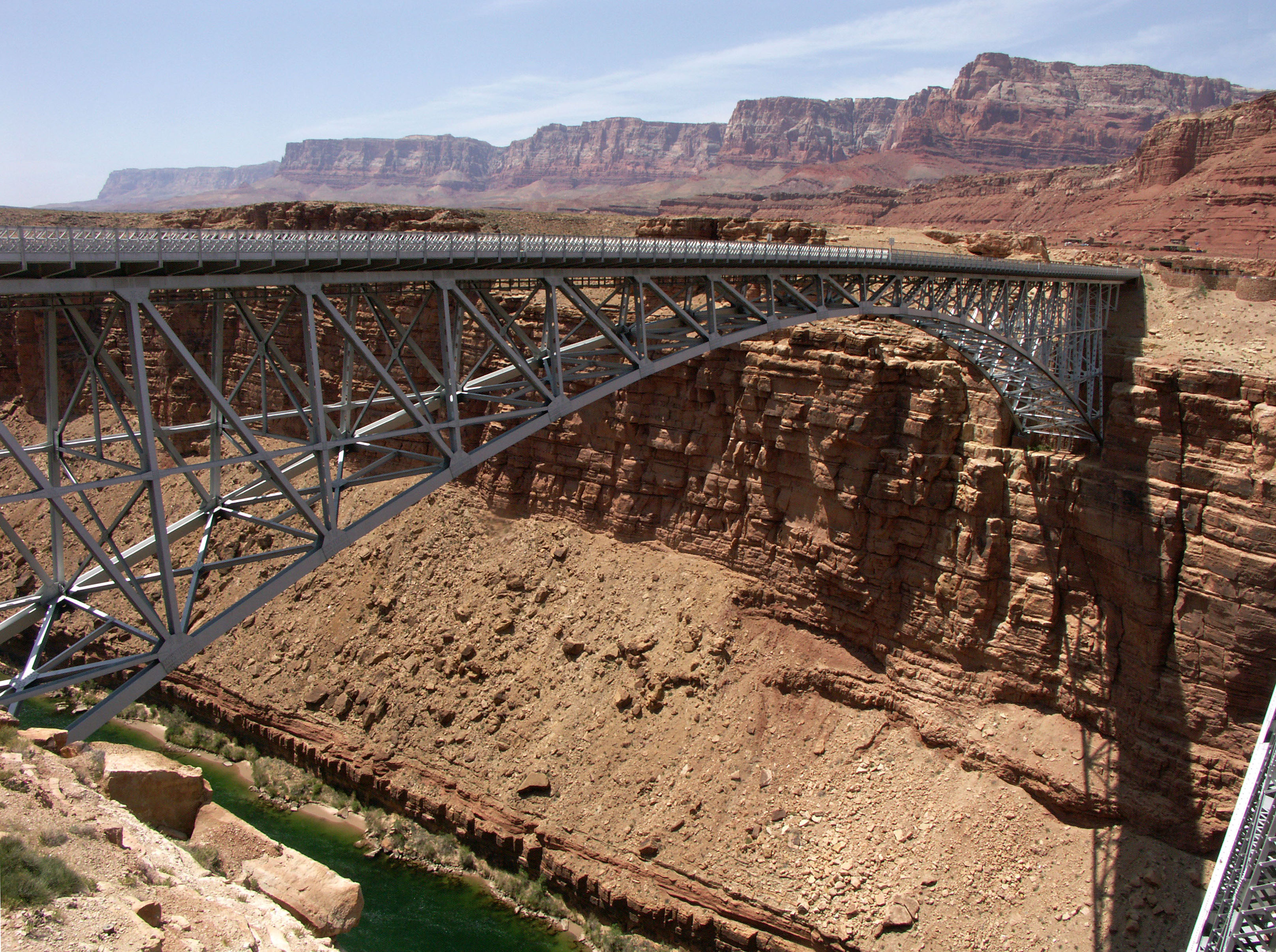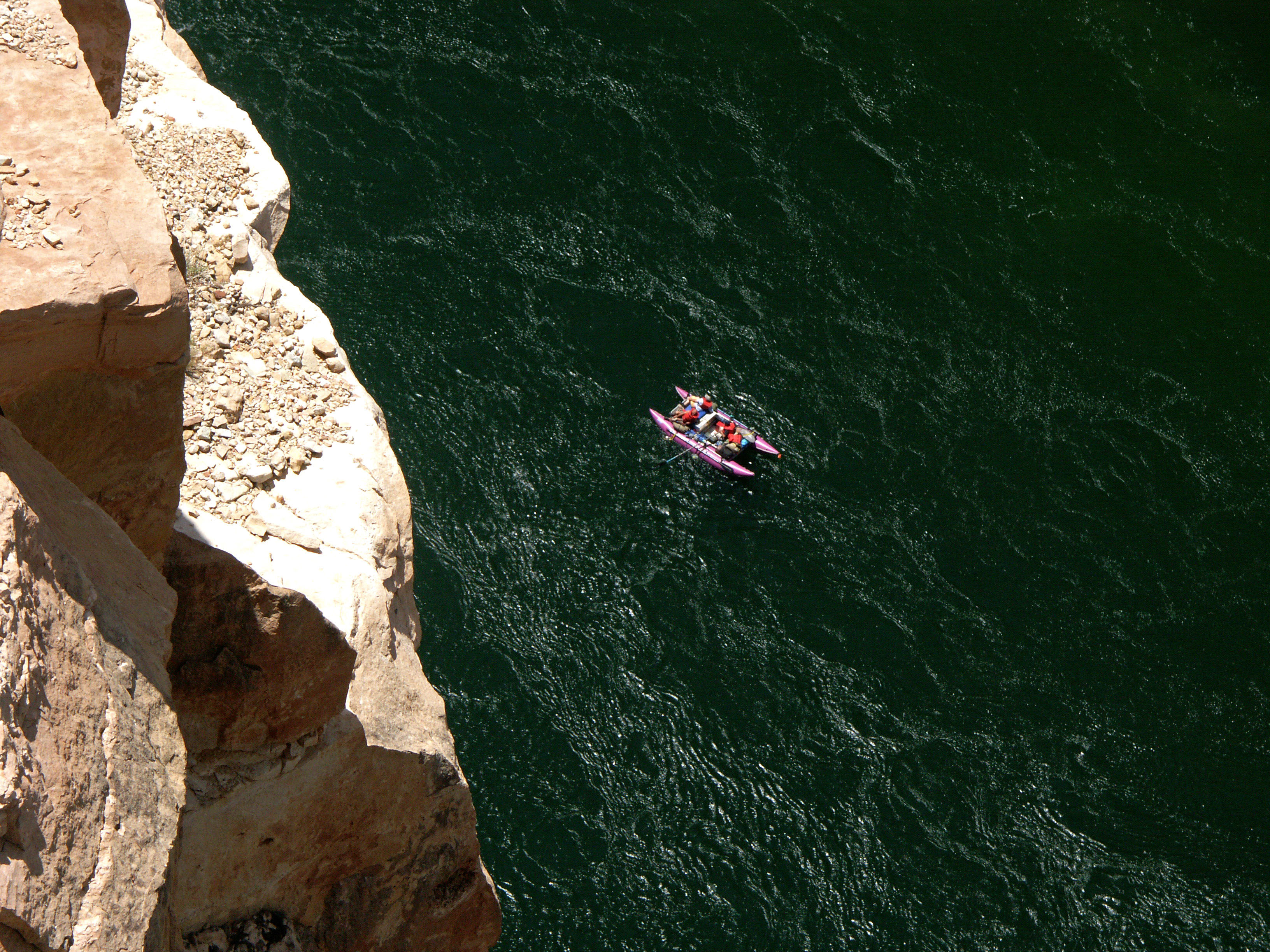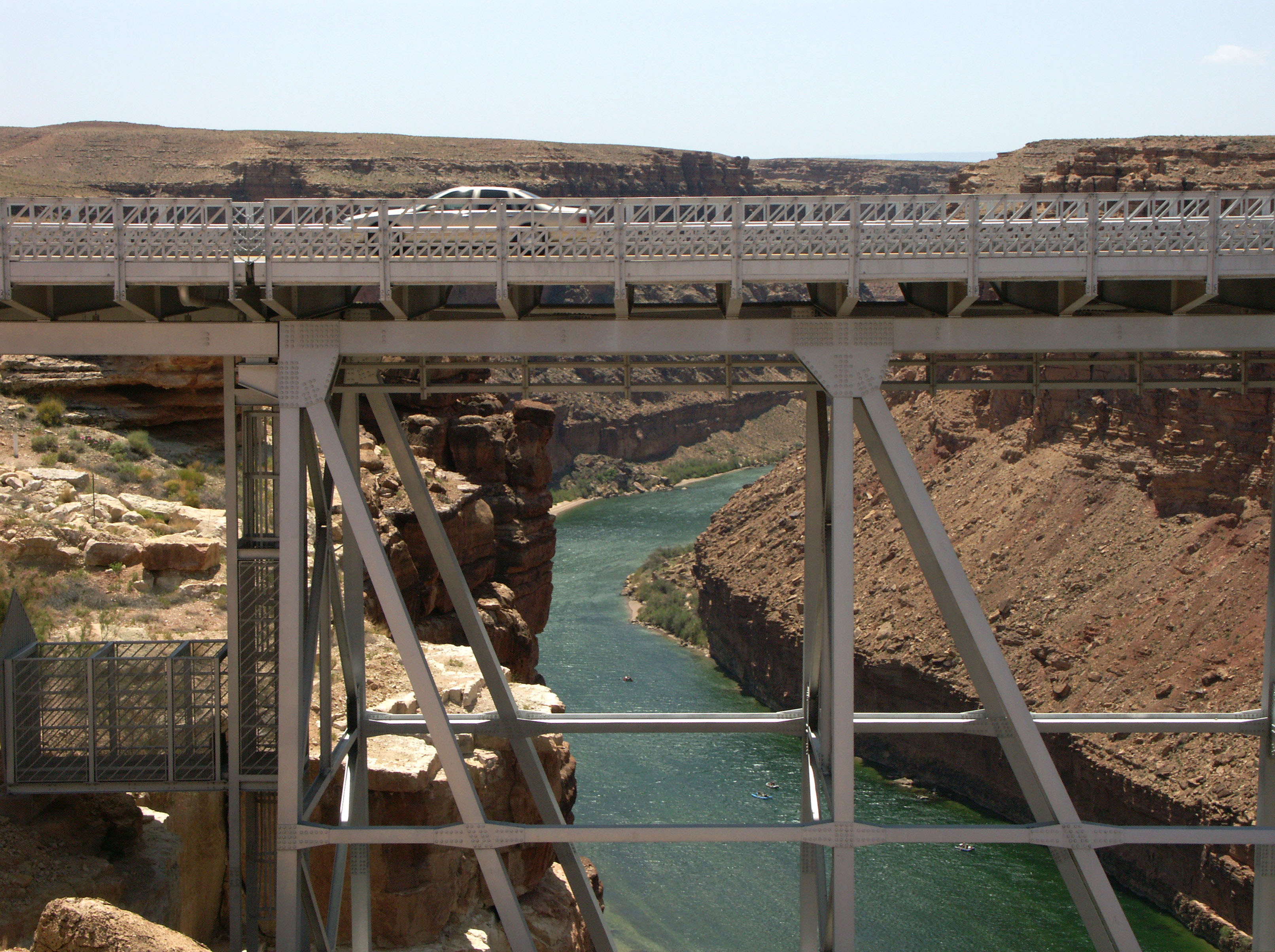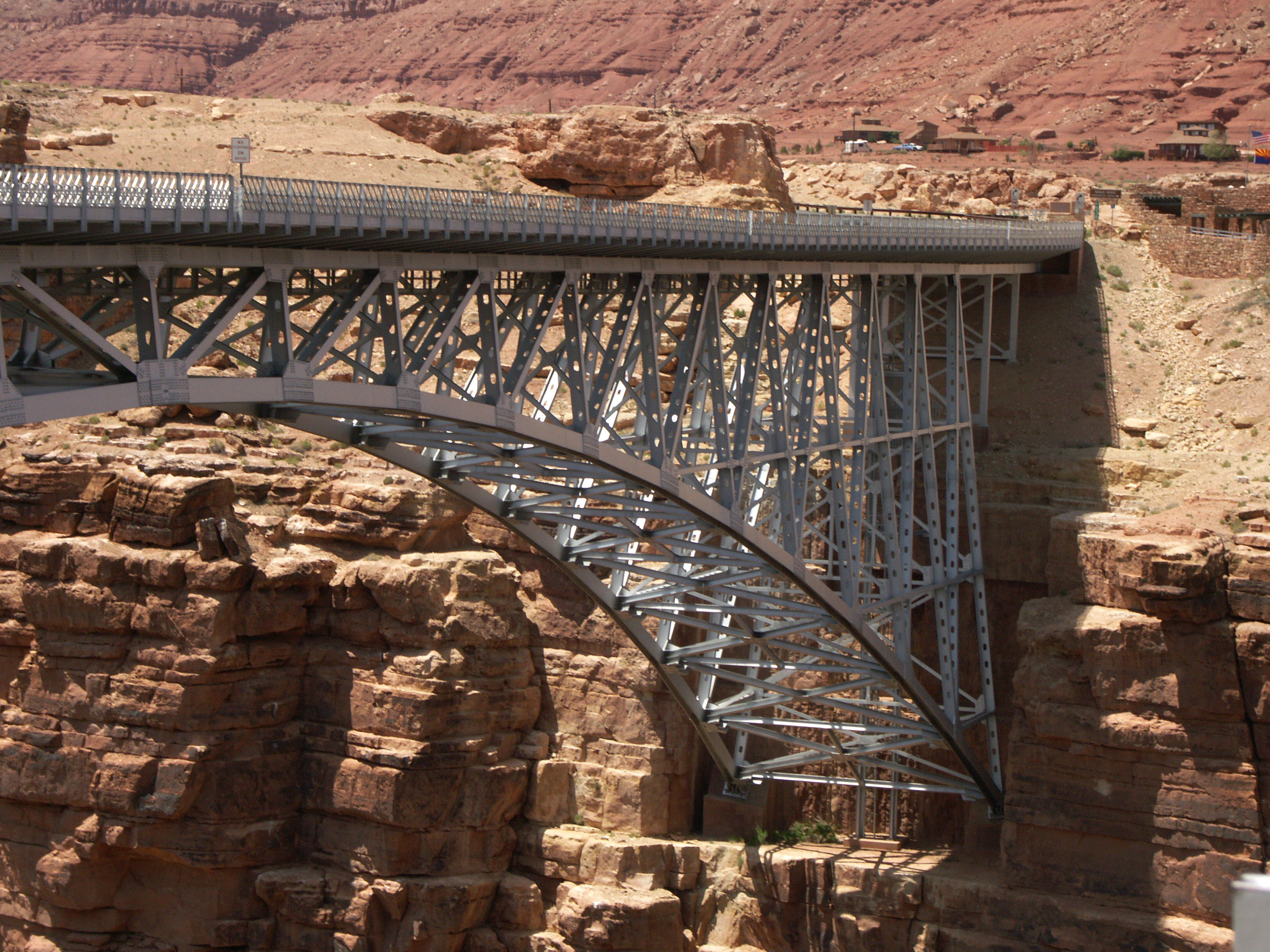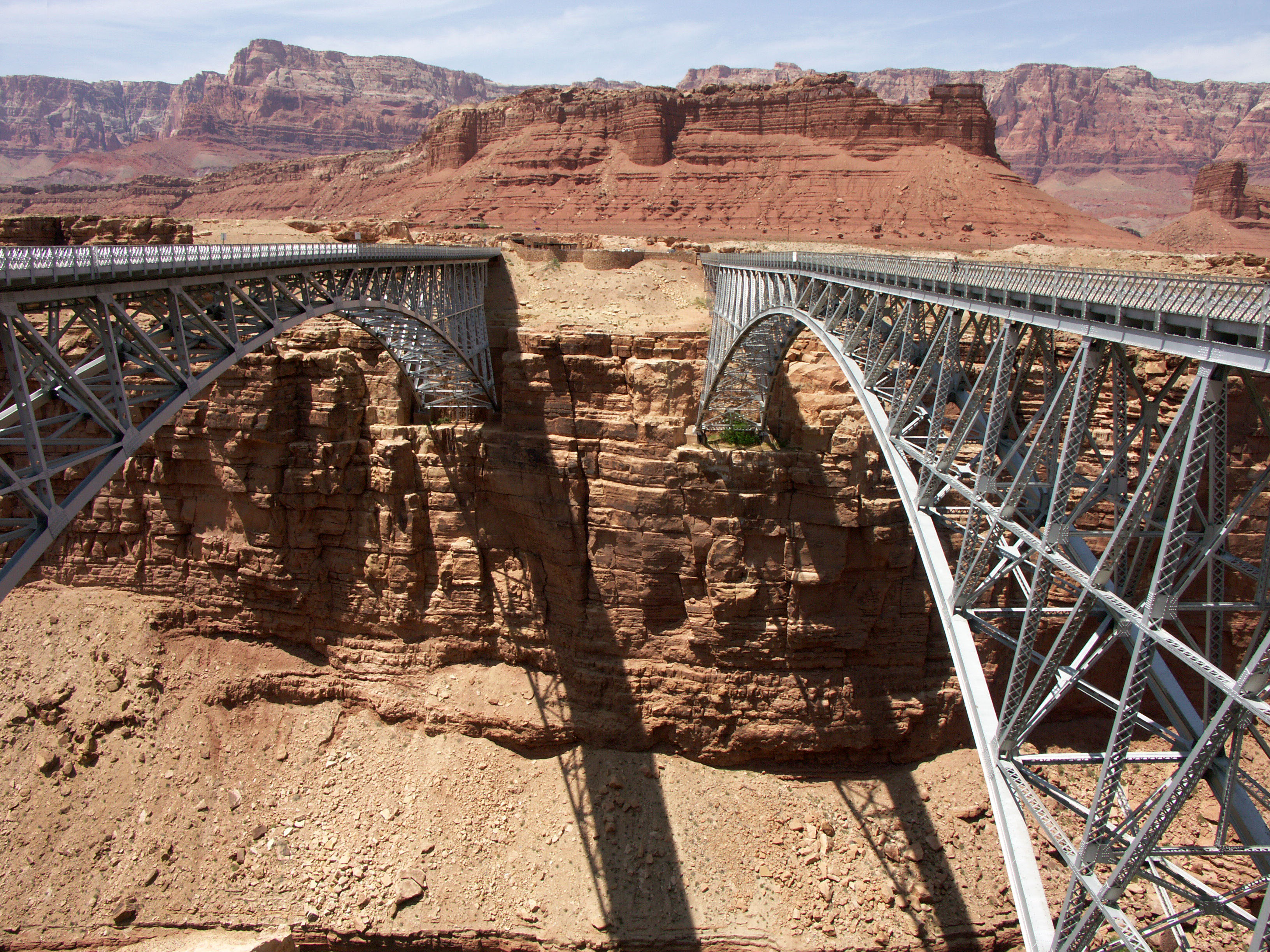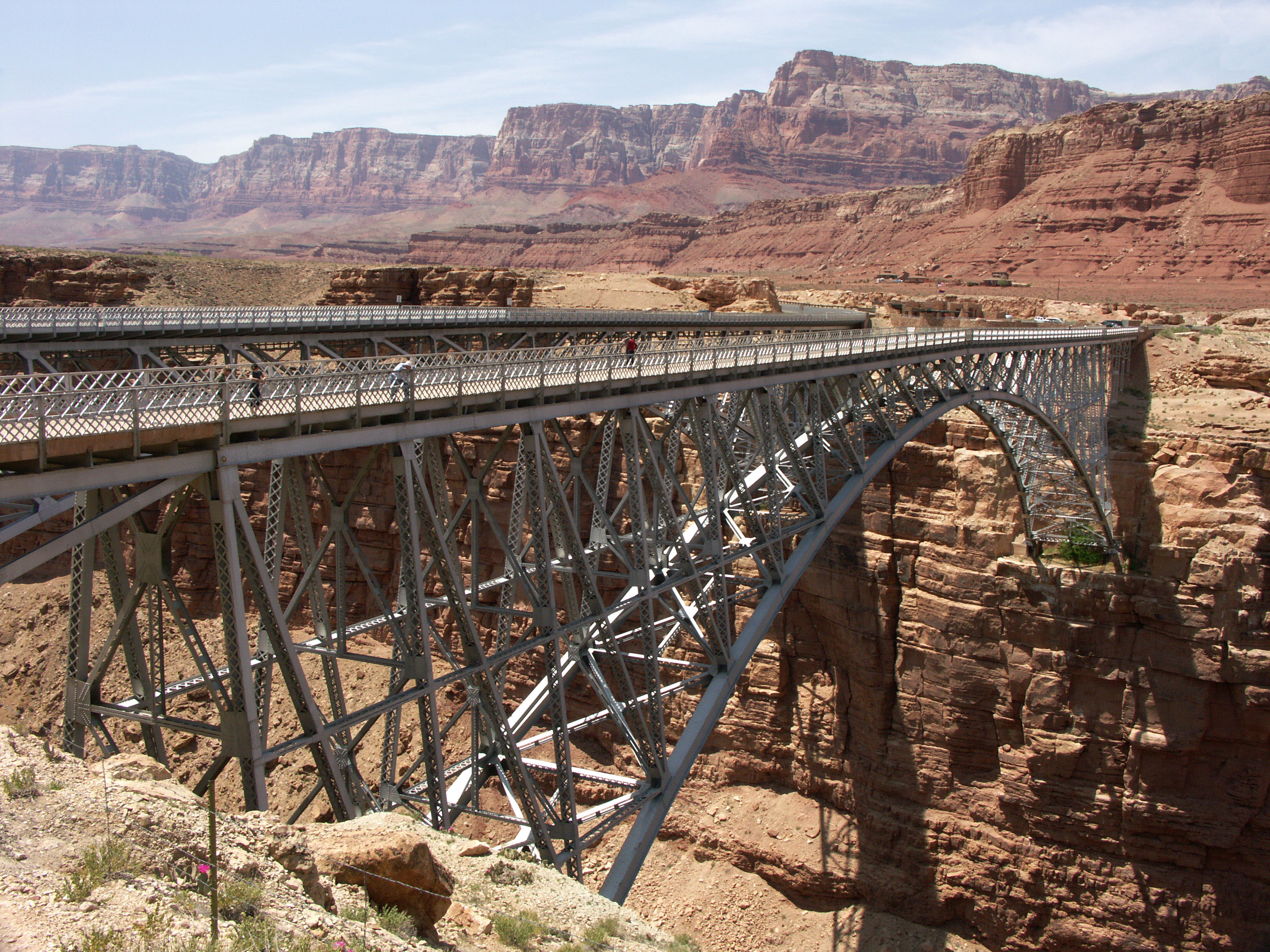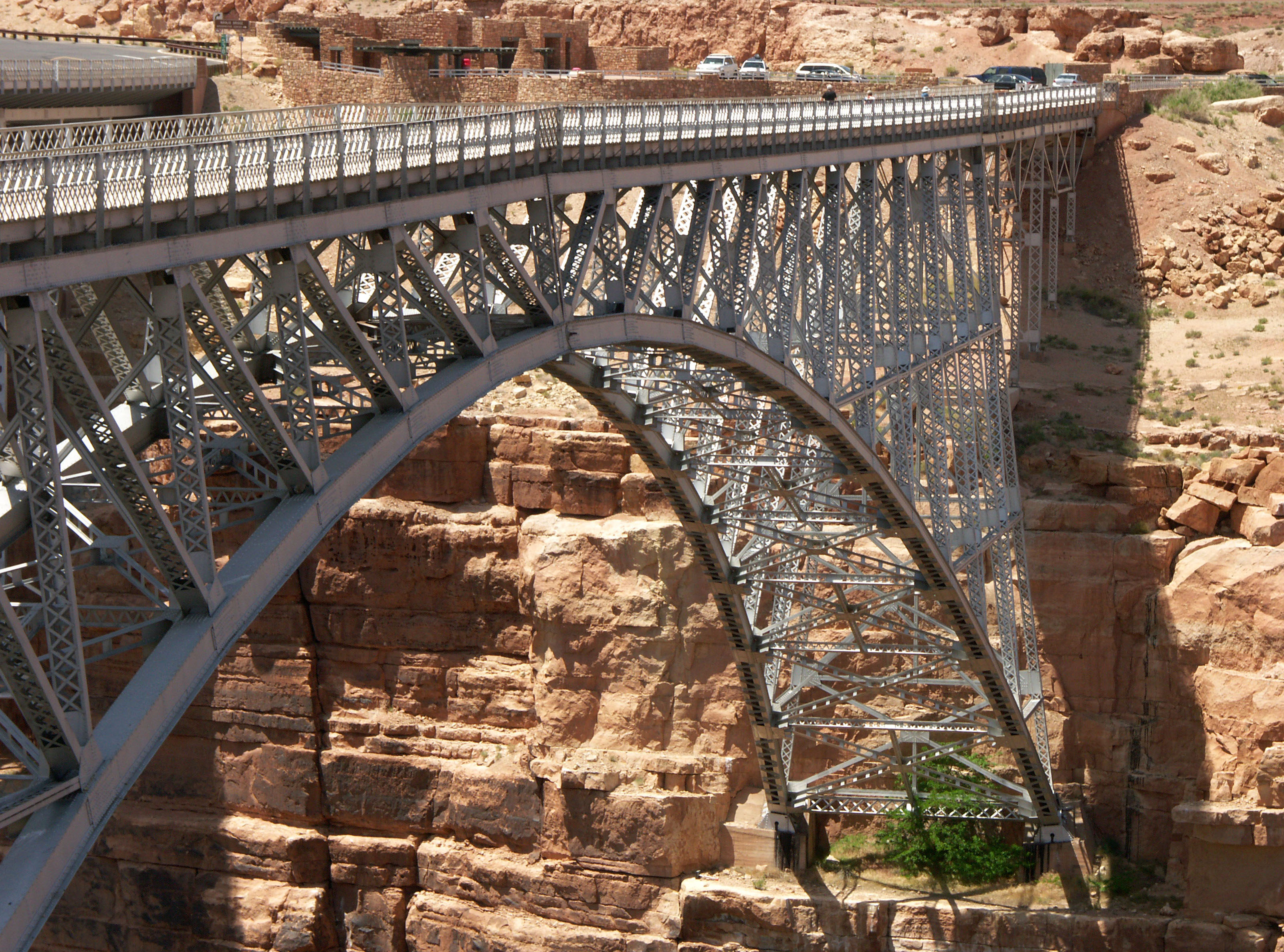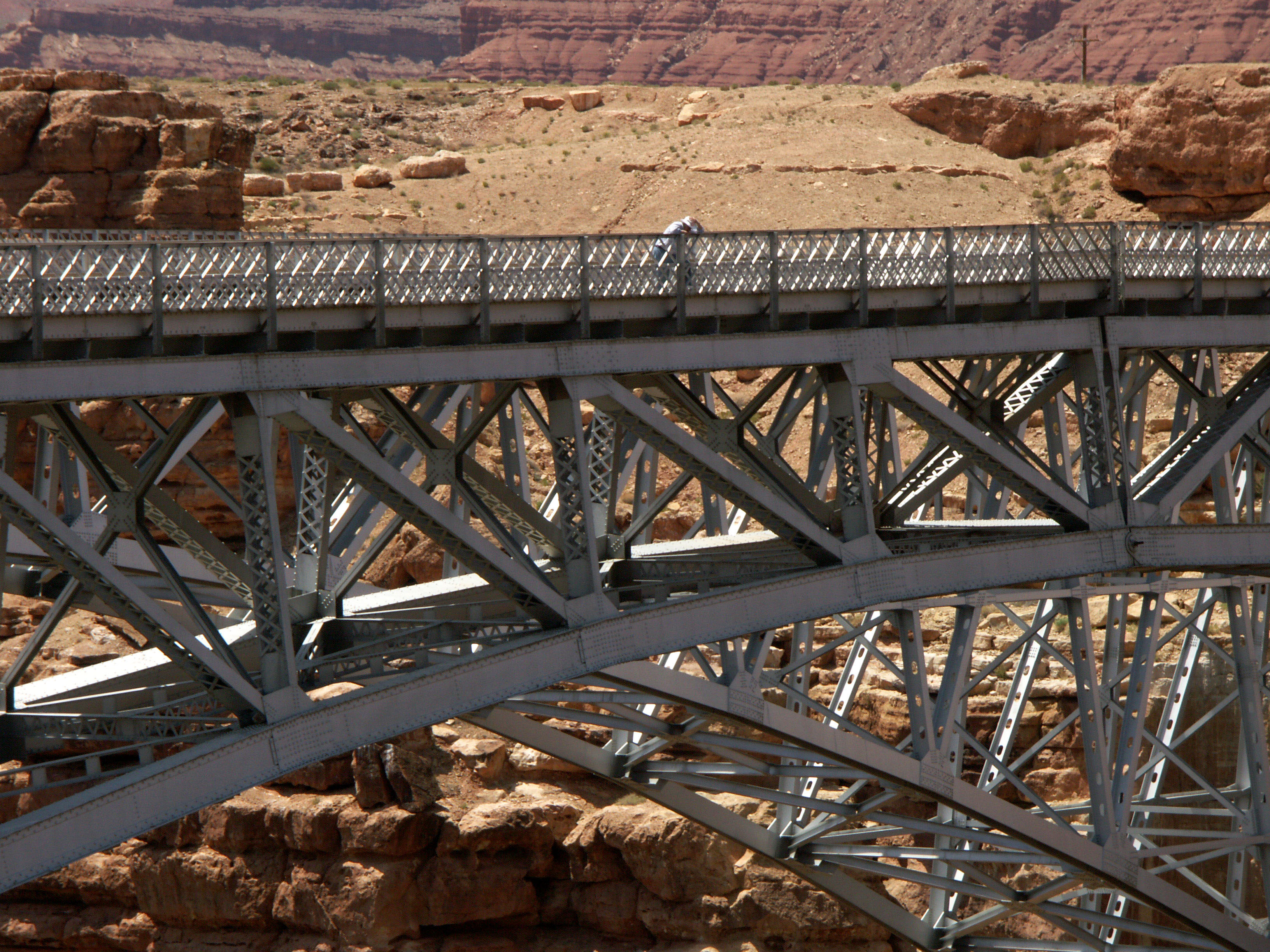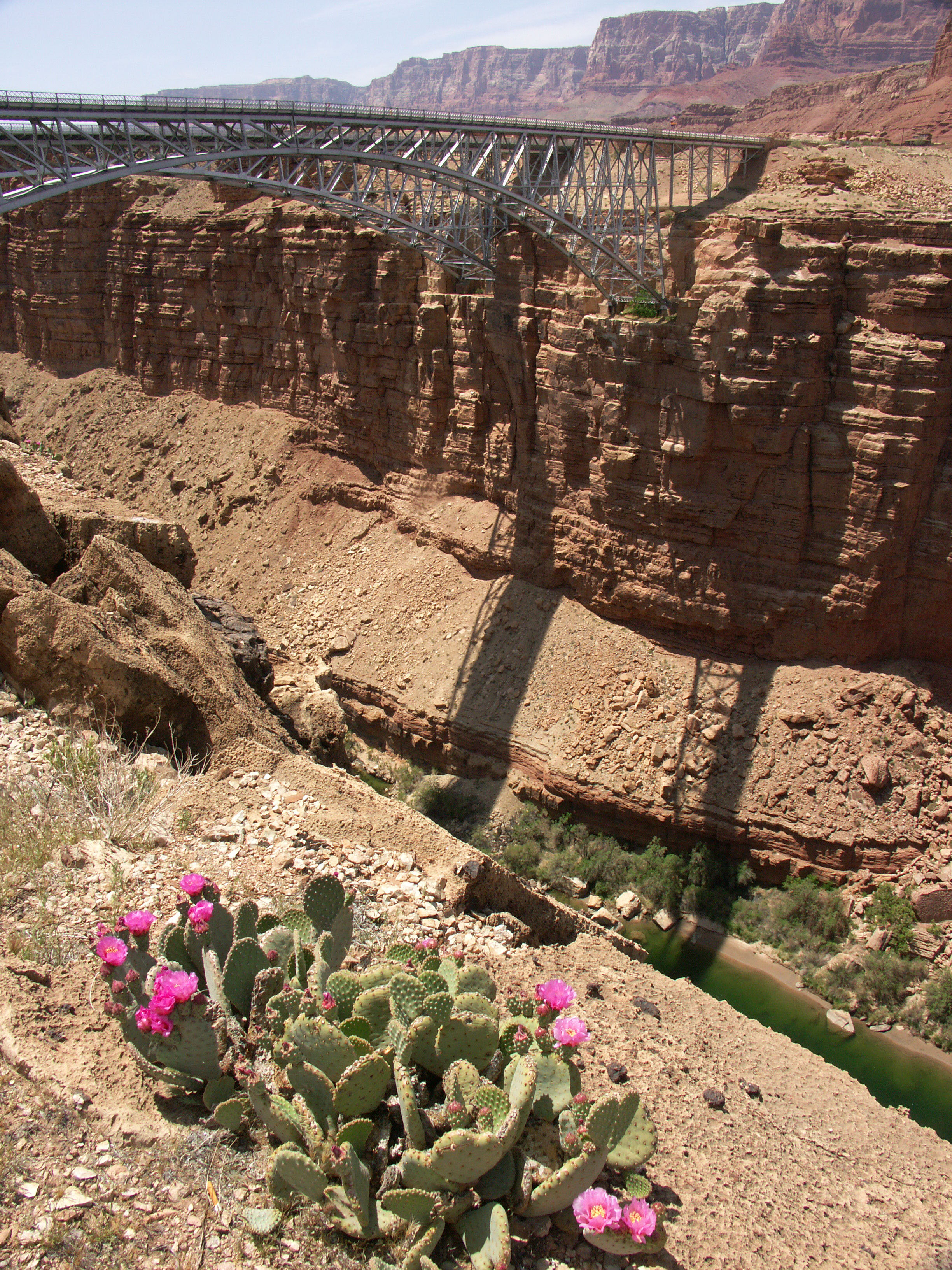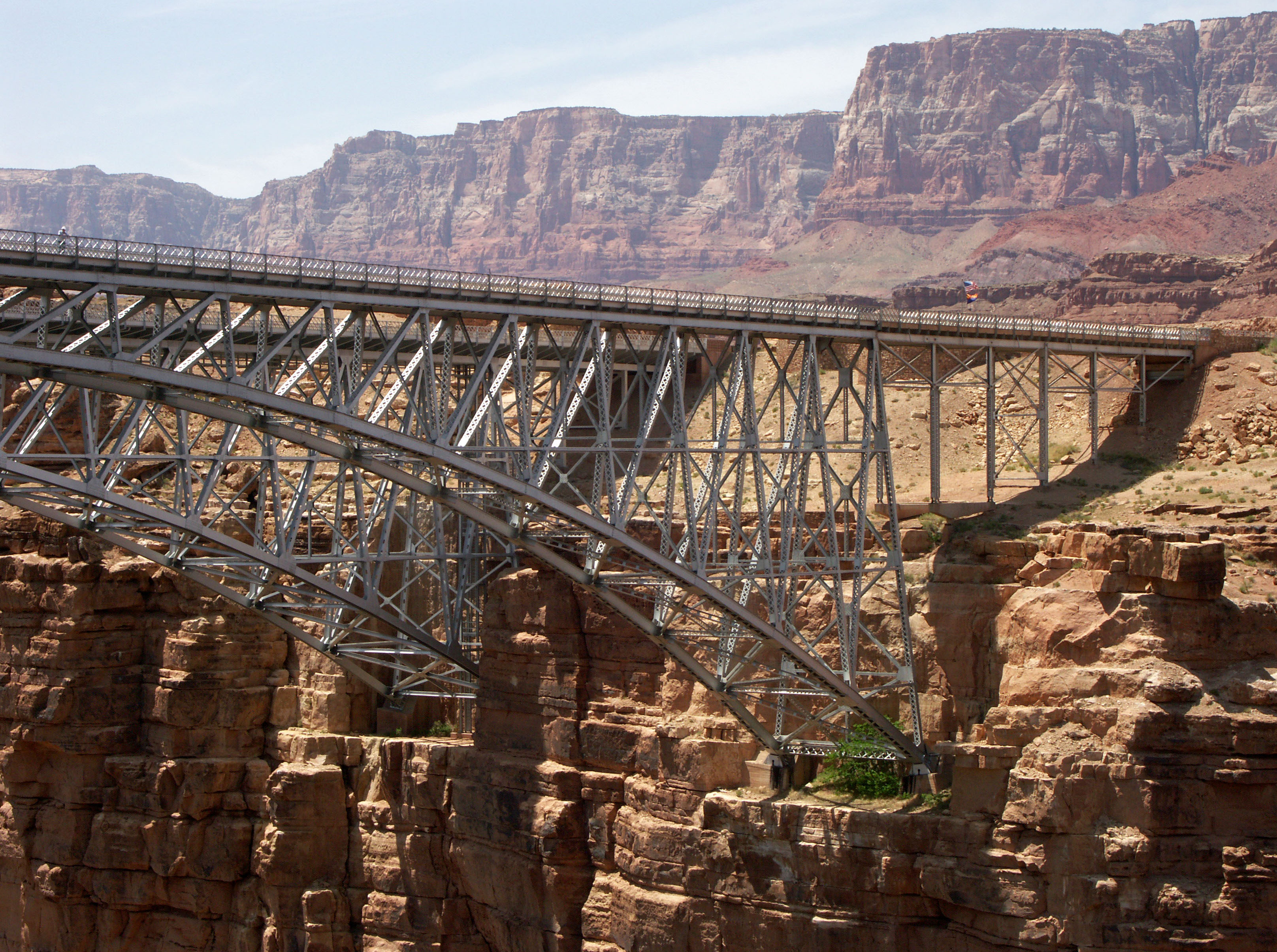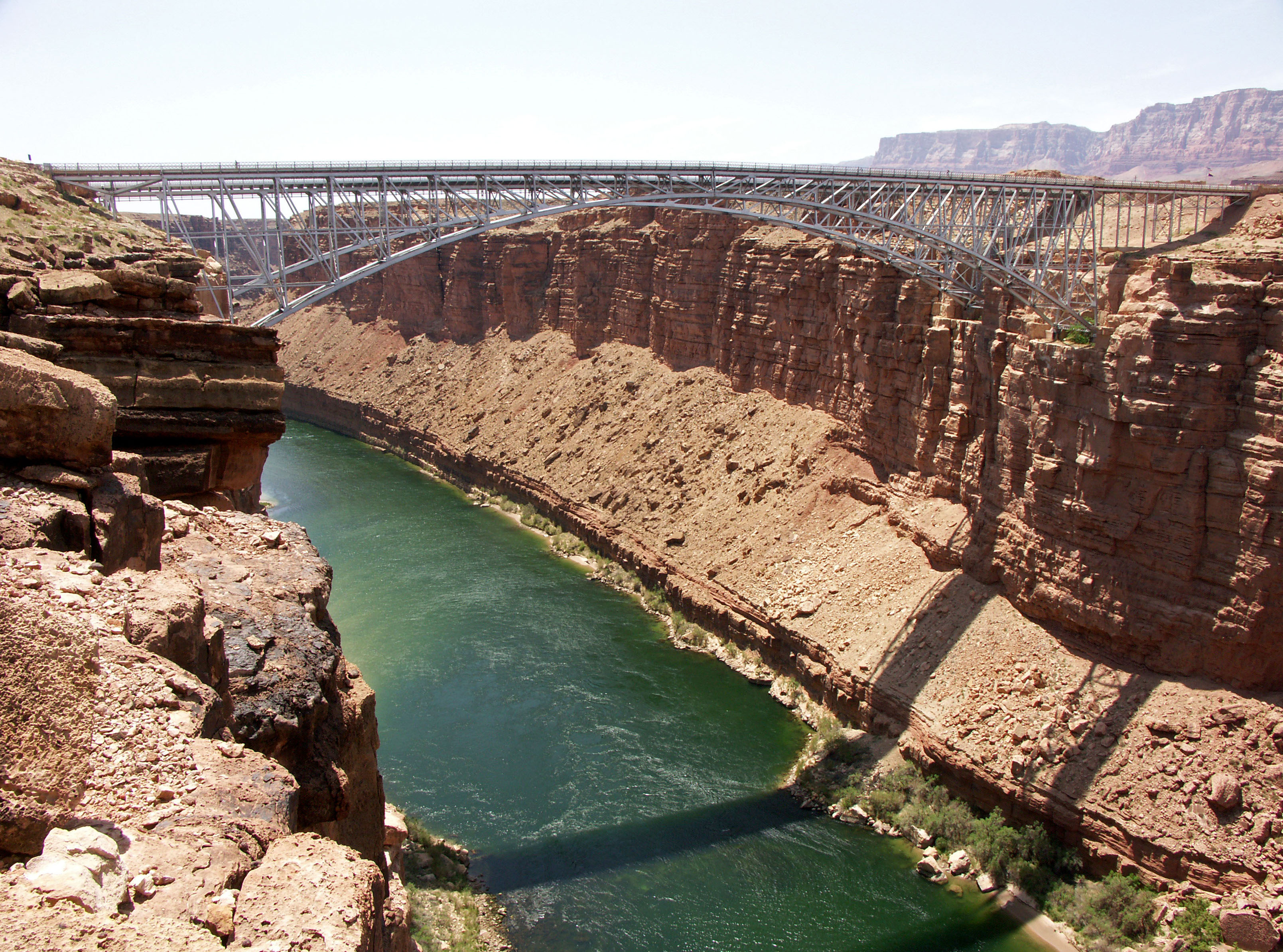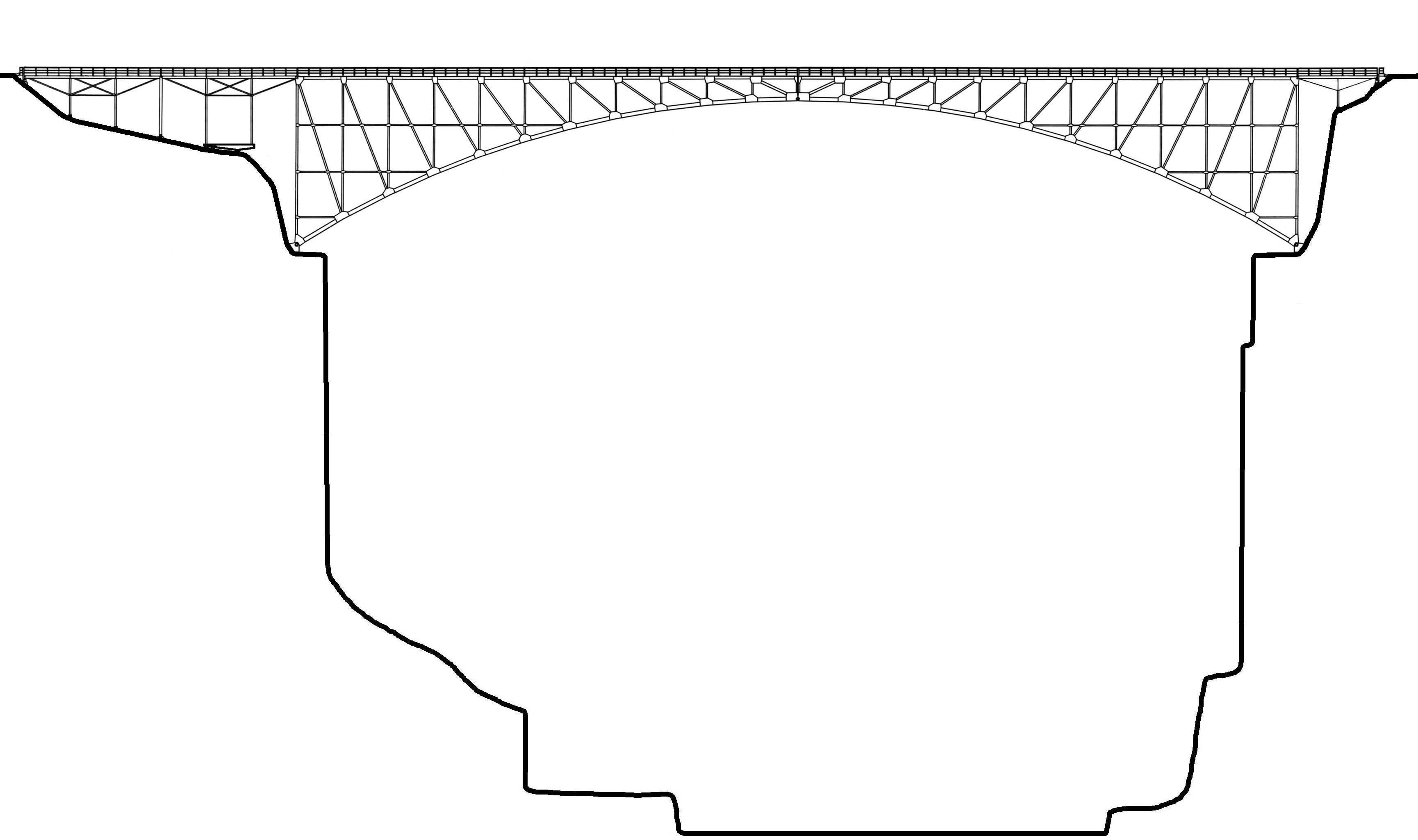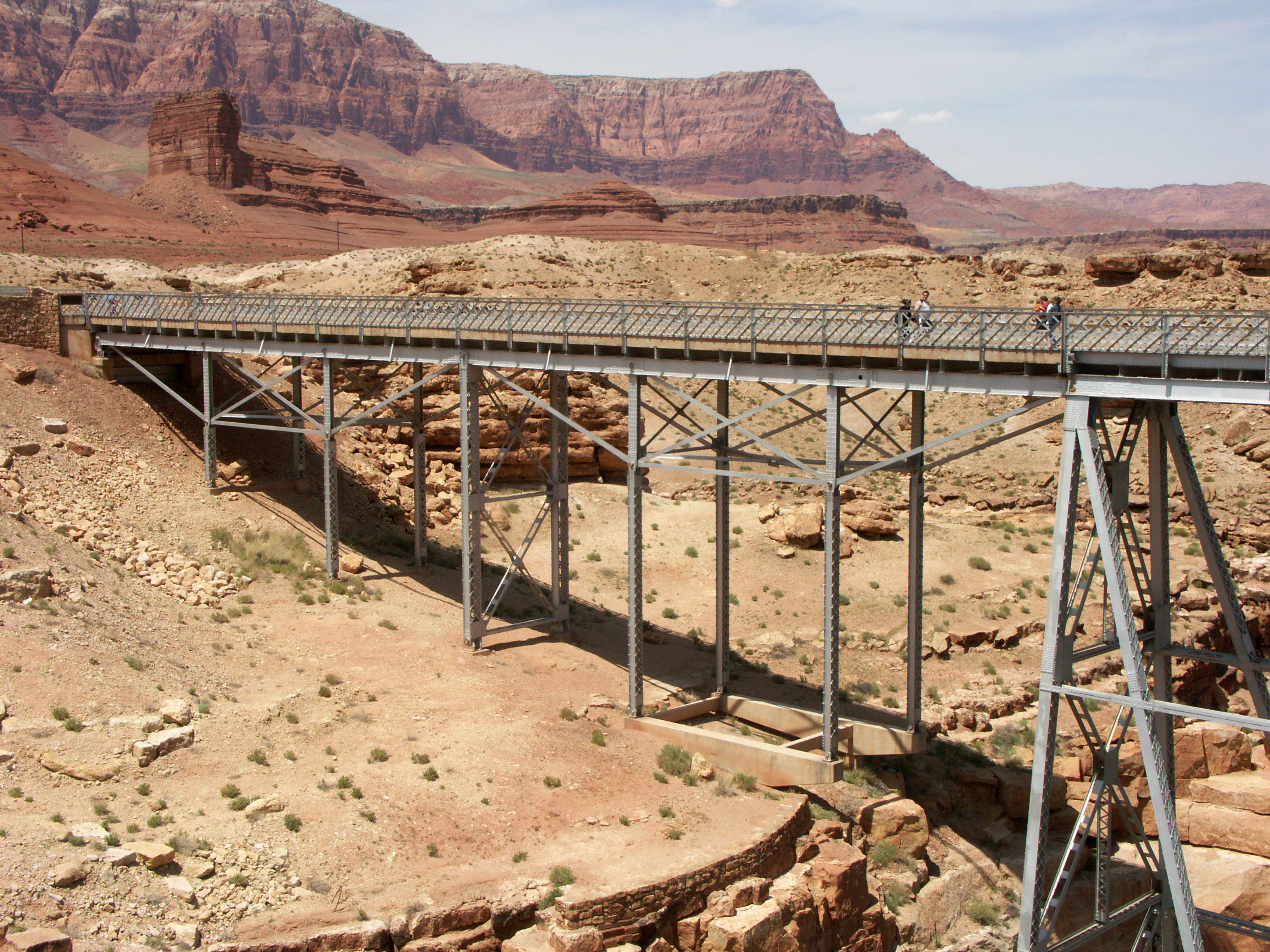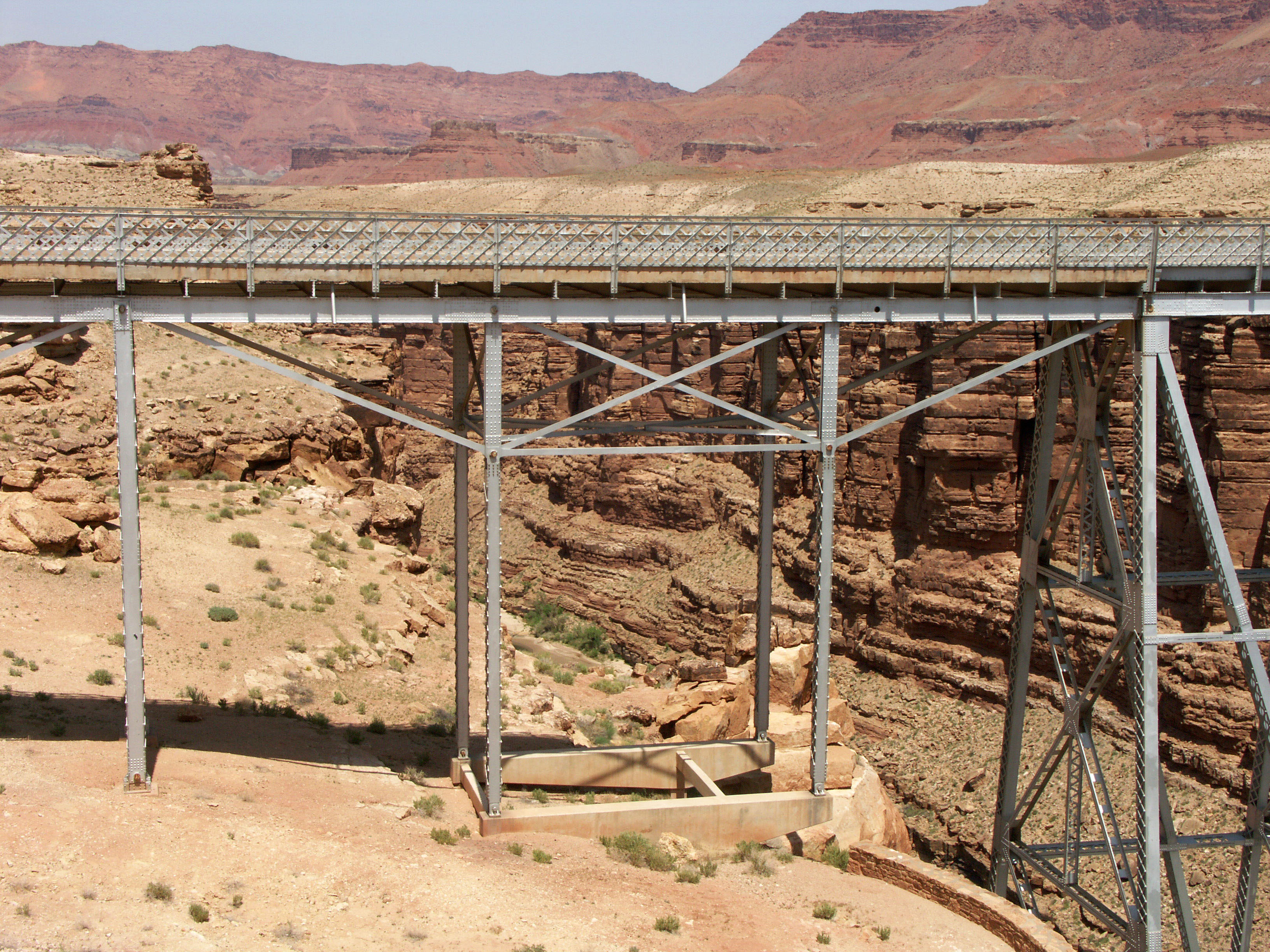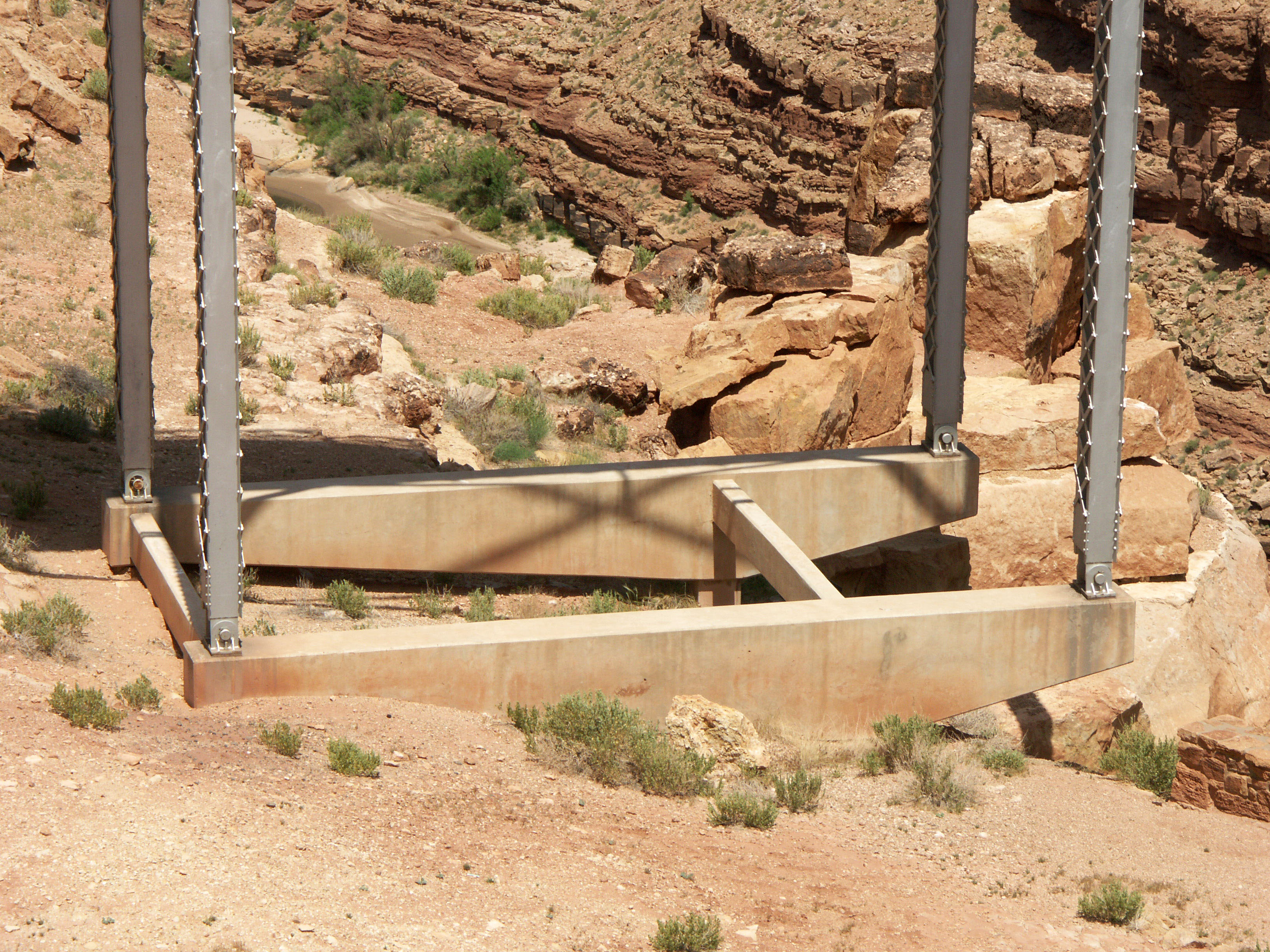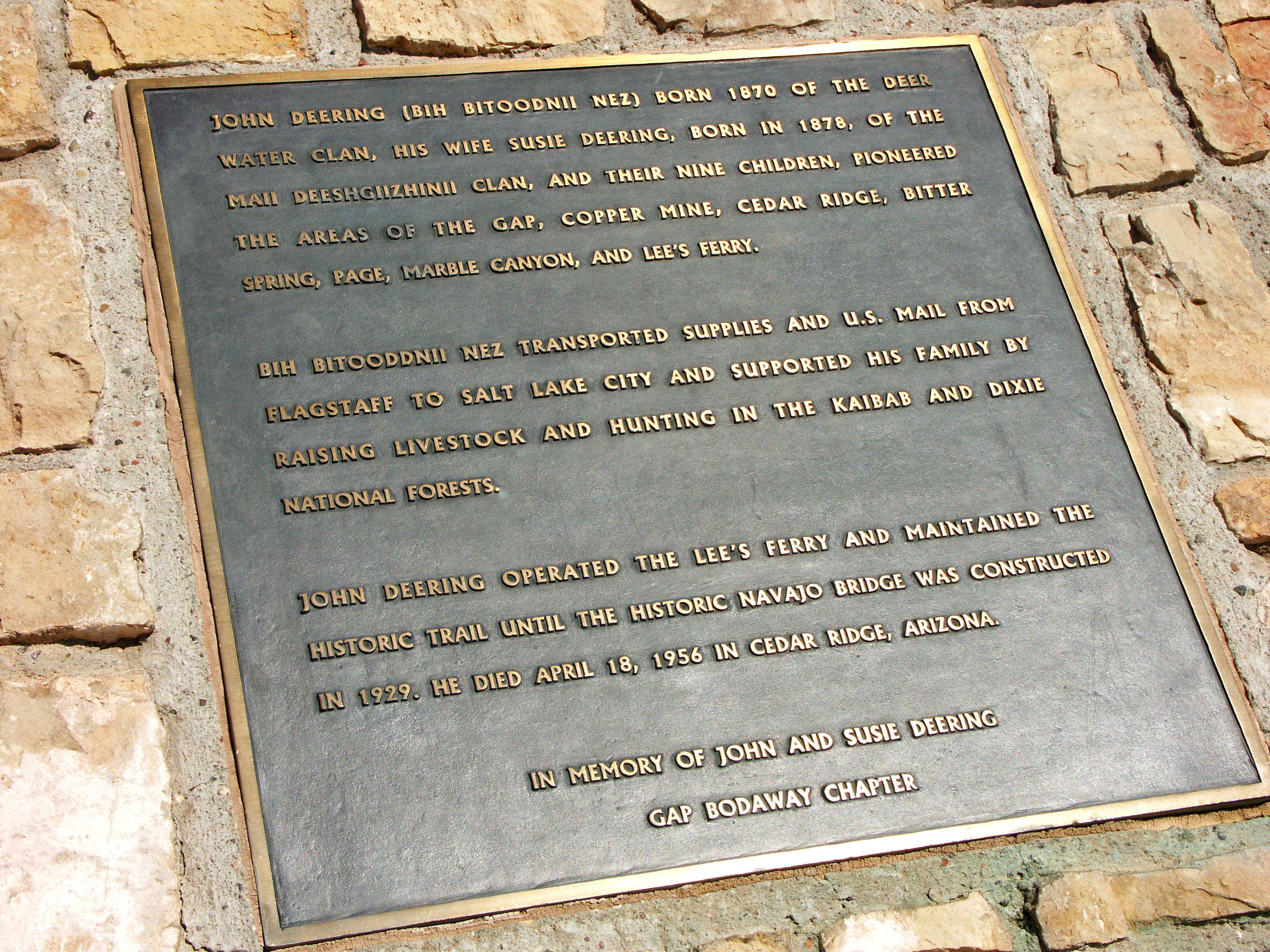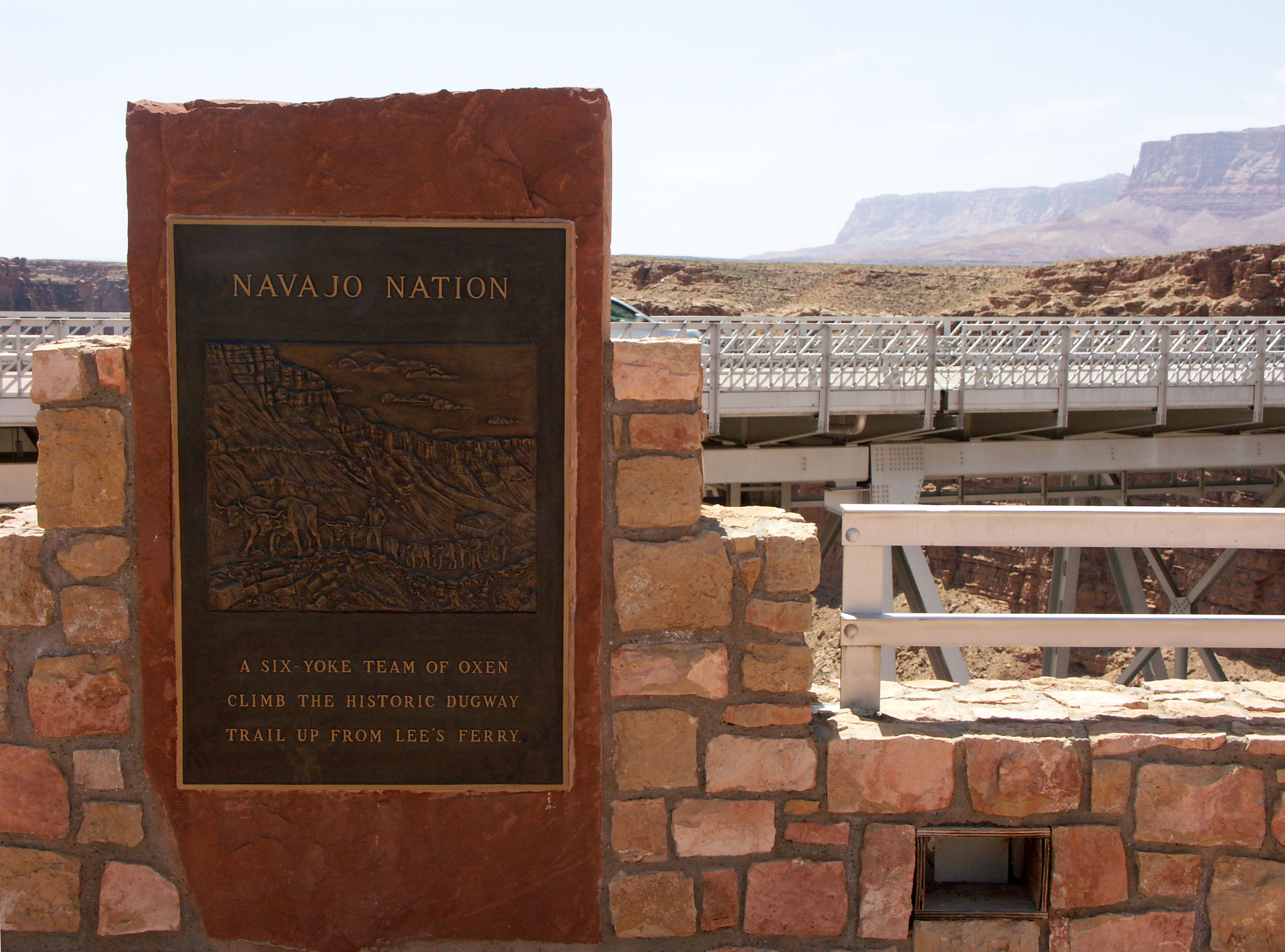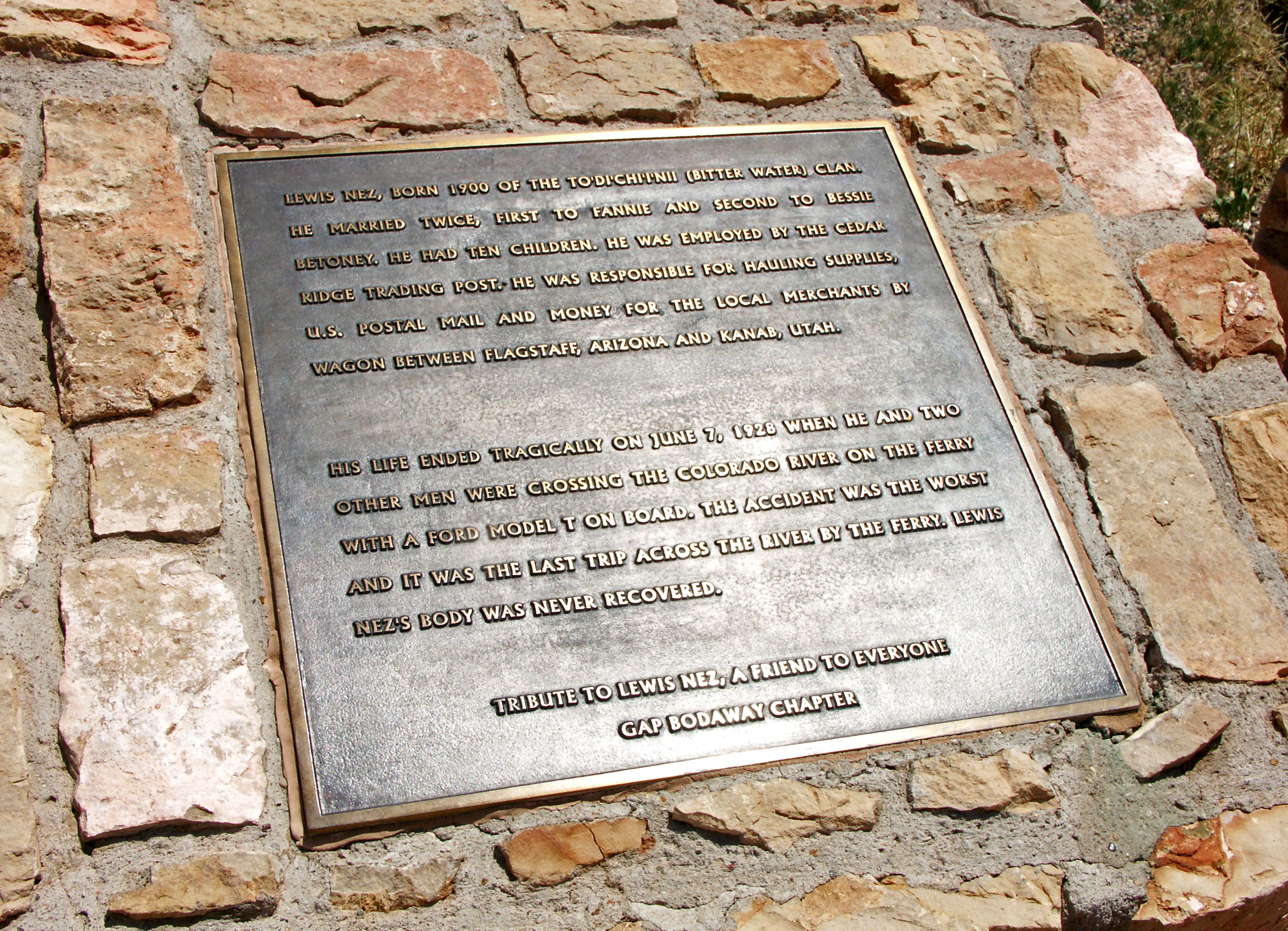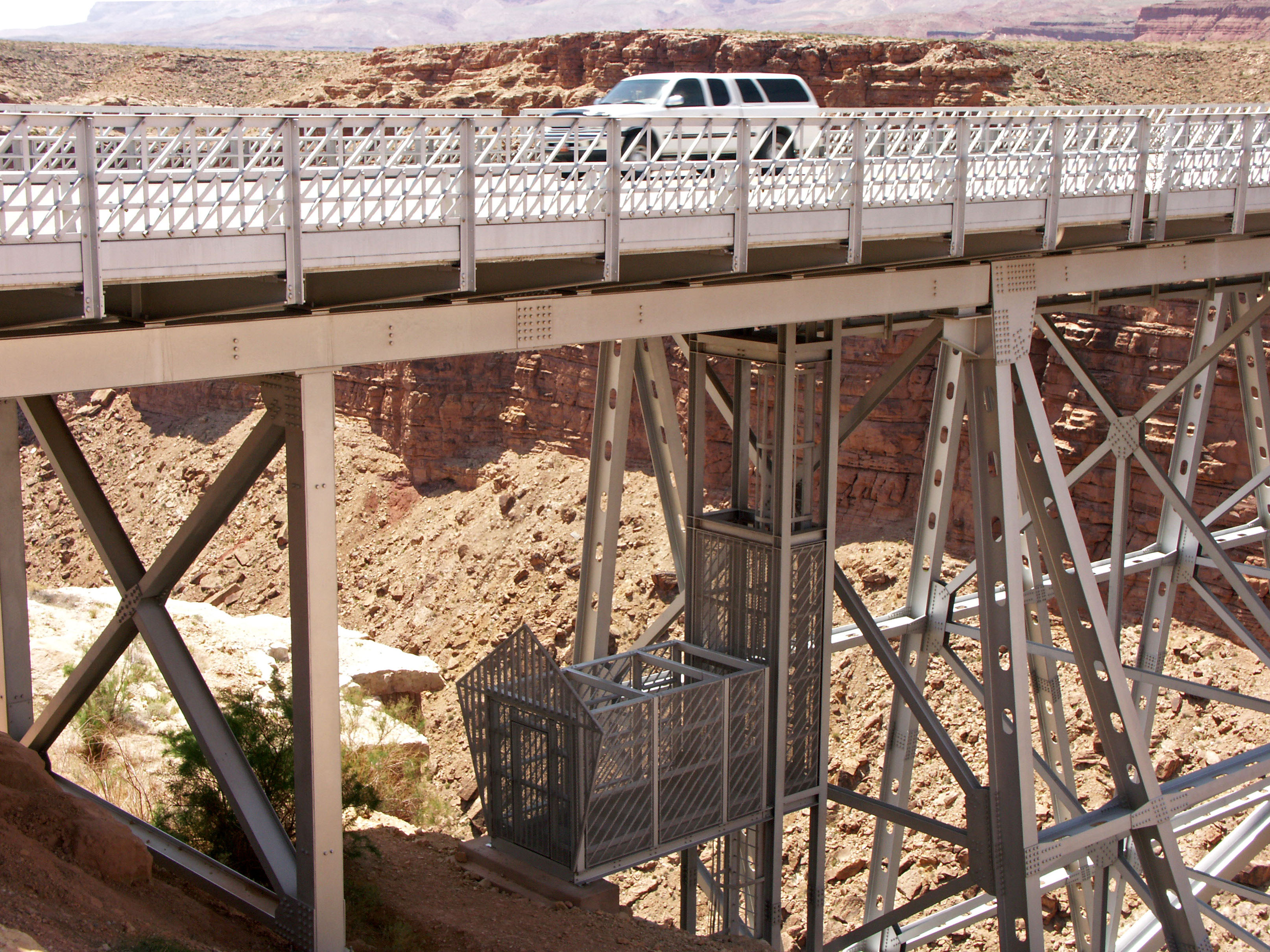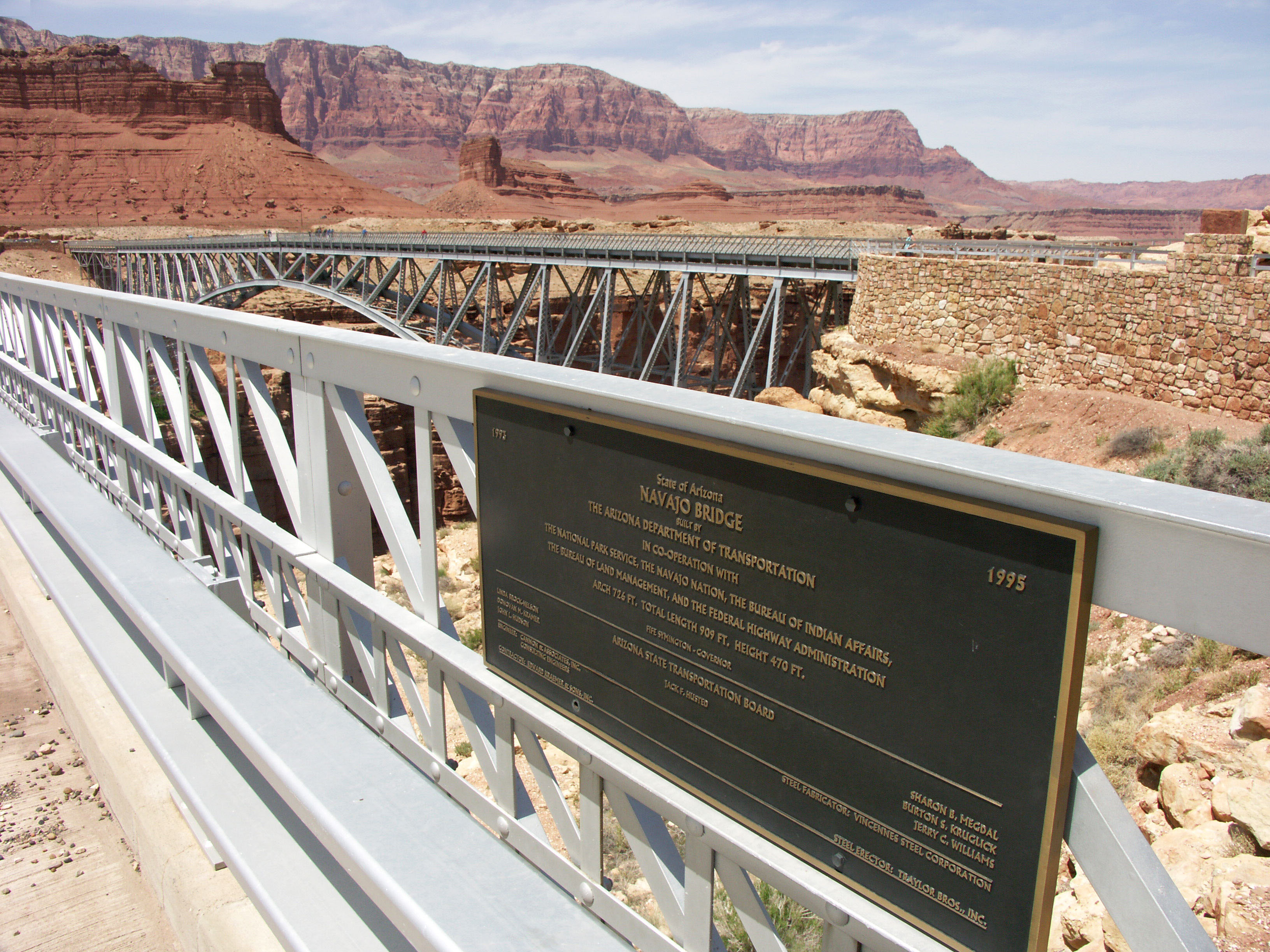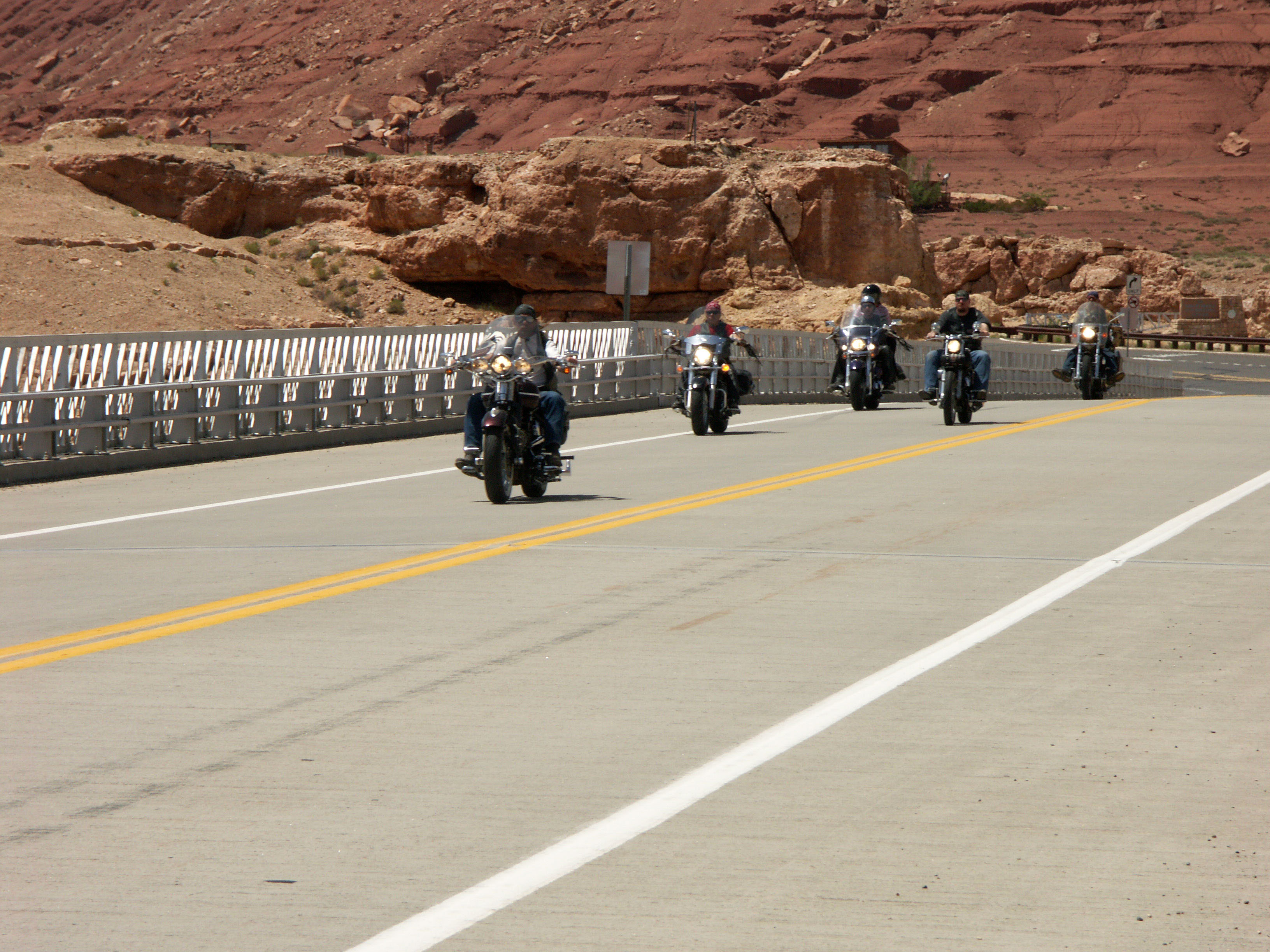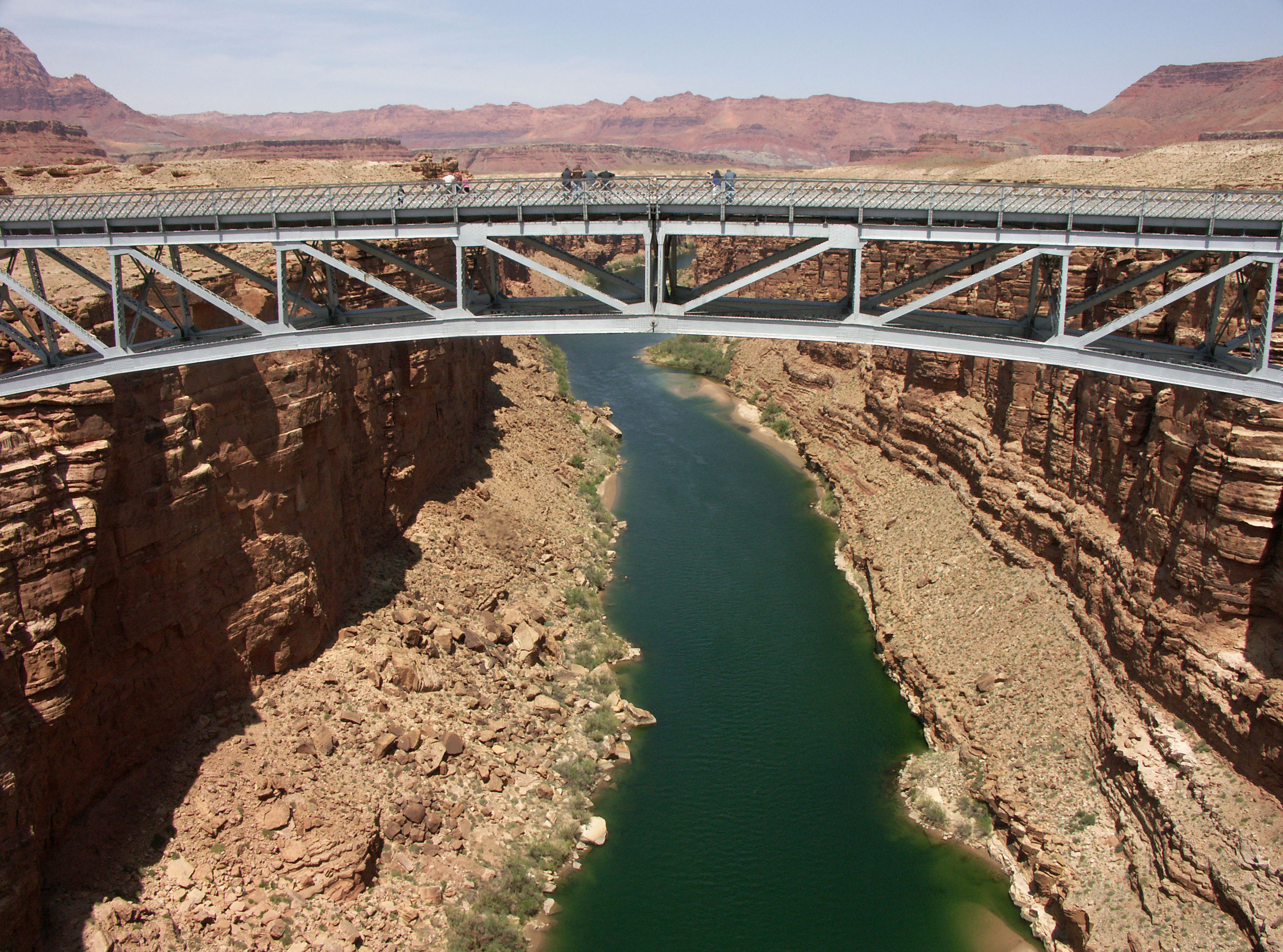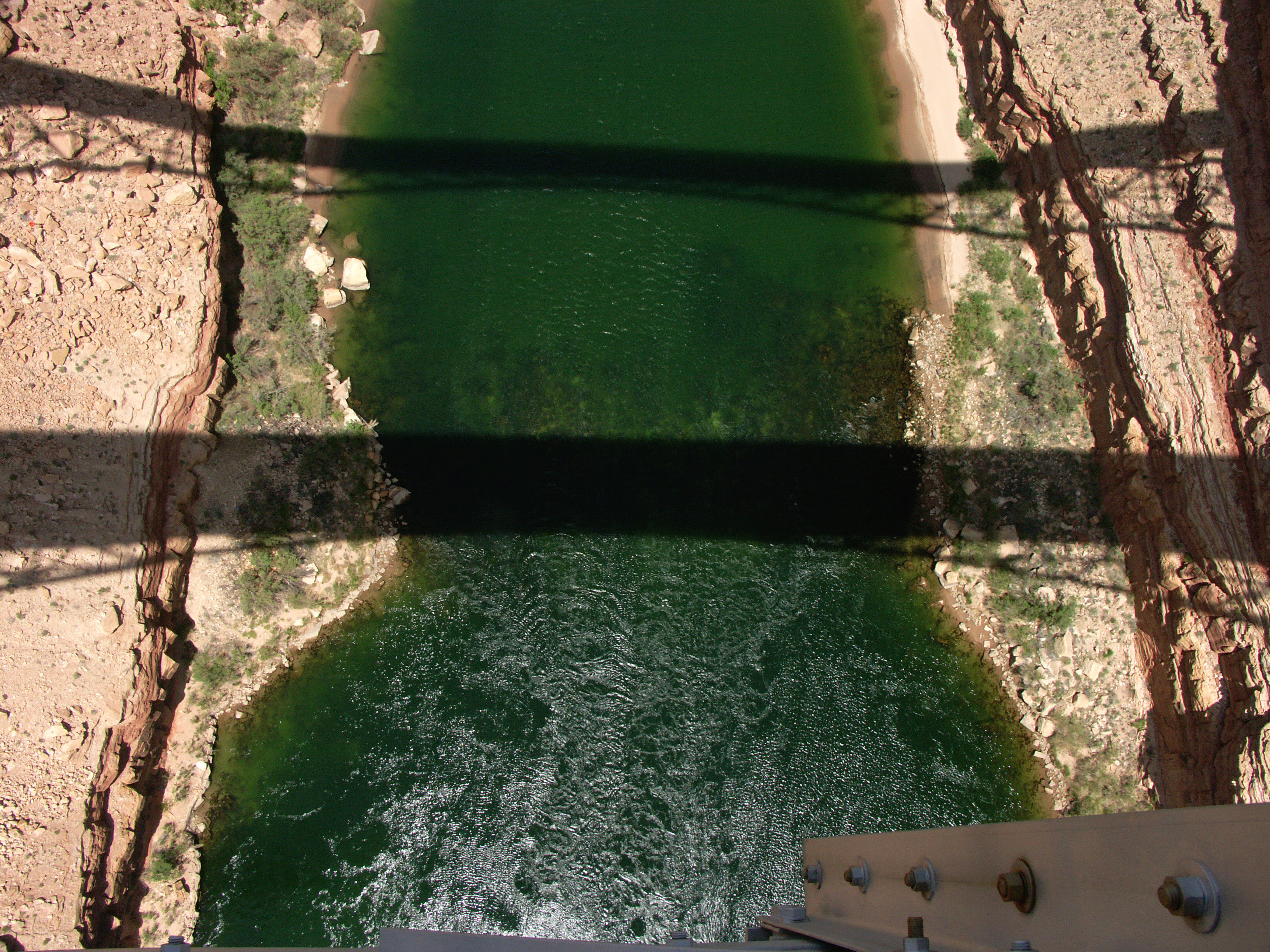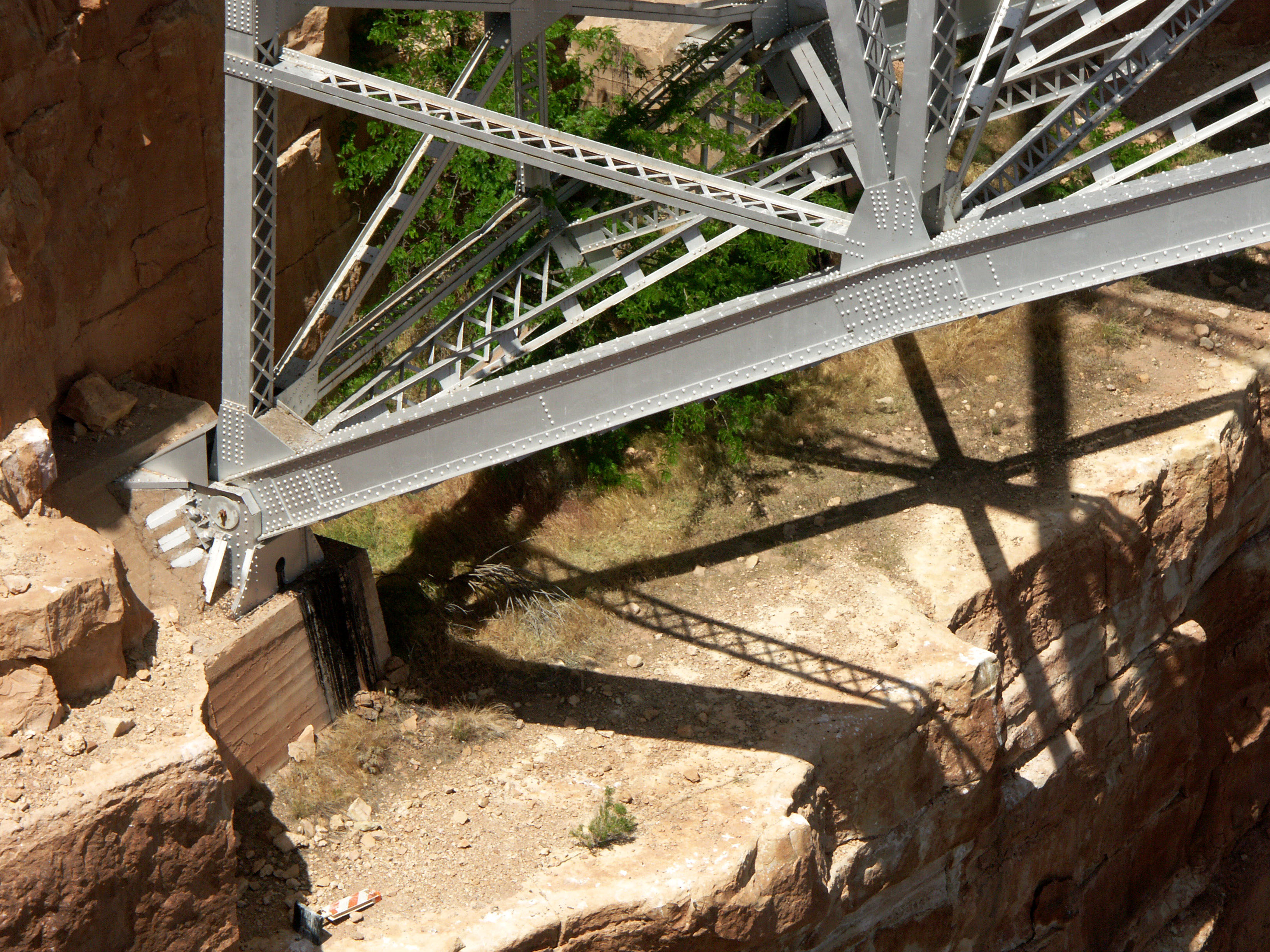Navajo 1995 Bridge
Navajo 1995 Bridge
Marble Canyon, Arizona, United States
470 feet high / 143 meters high
725 foot span / 221 meter span
1995
Opened in 1929, the original Navajo bridge crosses 470 feet (143 mtrs) above the Colorado River. The third highest bridge in North America at the time of its opening, the truss-arch bypassed nearby Lee’s Ferry and became the only road crossing of the river for hundreds of miles in either direction. It was not until the construction of the Glen Canyon Dam bridge in 1959 that another route crossed the river within Northern Arizona. The opening of the Navajo bridge changed the region forever as it allowed easier access to Grand Canyon National Park from Utah and points further north. It also opened up the North Rim of the Grand Canyon to travelers from Arizona.
The decision to cross the Colorado River just downstream of Lee’s Ferry was based less on location than engineering - the gorge was narrower here than at any other point in Arizona. Components for the bridge were manufactured by the Kansas City Structural Steel Company from steel rolled by the Illinois Steel Company and shipped west by train. The most difficult aspect of the construction was how to transport materials - including 12 ton pieces - by truck on roads that were often little more than trails. The 130 mile (209 km) trip from the Flagstaff railroad station to the bridge site took between 13 and 20 hours. The extreme depth of the canyon required the engineers to build the bridge by cantilevering the two halves of the bridge out from the rim of the canyon without the use of falsework. This was done with a unique system of tiebacks and toggles that held each half of the bridge from falling into the gorge until the two halves could rest on each other at the crown. A similar method was used for the construction of the first Giustina railway bridge in Italy. Despite the great drop down to the Colorado River, a safety net of hemp rope was woven but never installed.
Although the bridge opened to traffic on January 12, 1929, the official opening ceremonies did not take place until June 14th and 15th. Originally called the Grand Canyon bridge, it was not until January 1934 that the arch was renamed the Navajo bridge. The narrow, 9 foot (2.7 mtr) wide lanes that were adequate in the 1930s became dangerous in later decades with frequent head on collisions occurring on the bridge. In a period of just 13 years, 8 people were killed and many others were injured. The 40 ton weight limitation was also becoming a problem and after several studies, it was decided to build a completely new span next to the old one.
Designed to look like the 1929 bridge, the new arch has 11 spandrel panels within the main span - the same as the original. Since the 1995 span is 110 feet (33.5 mtrs) longer than the 1929 span, each panel is 33 feet (10 mtrs) instead of 28 feet (8.5 mtrs). Despite the increase in span length, the 1995 arch rises the same 90 feet (27.5 mtrs) as the older bridge to make the newer span appear to be the same size. The new Navajo crossing also included new approaches with wider curves and an interpretive center on the north rim. To preserve the cliffs and river banks, rock excavated from the rim could not fall into the canyon and had to be completely removed. The total cost of the entire bridge project was 14.7 million - more than 30 times as much as the original 1929 bridge which only cost 390 thousand dollars. Luckily for bridge fans, the older span was retained as a footbridge. Designated an Historic Civil Engineering Landmark, it is now the highest pedestrian-only bridge in North America. If you consider the nearby 720 foot (219 mtr) high Grand Canyon West Skywalk to be a bridge then Navajo is the second highest among all North American footbridges.
Image by Eric Sakowski / HighestBridges.com
Image by Eric Sakowski / HighestBridges.com
Image by Eric Sakowski / HighestBridges.com
Image by Eric Sakowski / HighestBridges.com
Image by Eric Sakowski / HighestBridges.com
Image by Eric Sakowski / HighestBridges.com
Image by Eric Sakowski / HighestBridges.com
Image by Eric Sakowski / HighestBridges.com
Image by Eric Sakowski / HighestBridges.com
Image by Eric Sakowski / HighestBridges.com
Navajo Bridge postcard.
Navajo Bridge image by HAER.
Navajo Bridge image by HAER.
Navajo Bridge image by HAER.
Image by Eric Sakowski / HighestBridges.com
Image by Eric Sakowski / HighestBridges.com
Image by Eric Sakowski / HighestBridges.com
Image by Eric Sakowski / HighestBridges.com
Image by Eric Sakowski / HighestBridges.com
Image by Eric Sakowski / HighestBridges.com
Image by Eric Sakowski / HighestBridges.com
Image by Eric Sakowski / HighestBridges.com
Image by Eric Sakowski / HighestBridges.com
Image by Eric Sakowski / HighestBridges.com
Image by Eric Sakowski / HighestBridges.com
Image by Eric Sakowski / HighestBridges.com
Image by Eric Sakowski / HighestBridges.com
Image by Eric Sakowski / HighestBridges.com
Image by Eric Sakowski / HighestBridges.com
Image by Eric Sakowski / HighestBridges.com
Image by Eric Sakowski / HighestBridges.com
Image by Eric Sakowski / HighestBridges.com
Image by Eric Sakowski / HighestBridges.com
Additional supports were added sometime later to the approach spans to handle heavier vehicles.
Image by Eric Sakowski / HighestBridges.com
Image by Eric Sakowski / HighestBridges.com
Image by Eric Sakowski / HighestBridges.com
Image by Eric Sakowski / HighestBridges.com
Image by Eric Sakowski / HighestBridges.com
Image by Eric Sakowski / HighestBridges.com
Image by Eric Sakowski / HighestBridges.com
Image by Eric Sakowski / HighestBridges.com
Image by Eric Sakowski / HighestBridges.com
Image by Eric Sakowski / HighestBridges.com
Image by Eric Sakowski / HighestBridges.com
Image by Eric Sakowski / HighestBridges.com
Image by Eric Sakowski / HighestBridges.com
Image by Eric Sakowski / HighestBridges.com
Image by Eric Sakowski / HighestBridges.com
Image by Eric Sakowski / HighestBridges.com
